FMG Young Farmer of the Year Grand Final
STAFF REPORTER
New Zealand farming’s iconic competition for young farmers has finally broken the gender barrier.

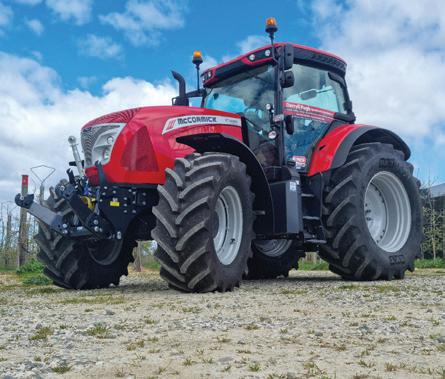
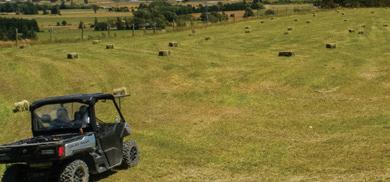
Waikato Bay of Plenty Young Farmer, Emma Poole, was the winner and






crowned as the 2023 FMG Young Farmer of the Year. She made history as the contest’s first-ever female champion.
Emma secured the win following three days of grueling challenges against six other Grand Finalists.
parts and

Congratulations also to Nick O’Connor who worked hard competing in a series of Young Farmer competitions which gave him the opportunity to represent Tasman, in the competition held last month in Timaru.

More than 600 spectators poured into
Winchester Showgrounds to watch as the contestants’ farming skills and general knowledge were put to the test with tasks including repairing farm machinery, creating a hydroponic system and an intense race-style challenge

Continued on page 2

TOBY RANDALL 027 233 9170 toby.randall@harcourts.co.nz www.tobyrandall.co.nz Team Toby Randall Top of the South Rural “New ideas, Old school values!” PH: 03 544 5723 Main Rd Appleby, Nelson Agents for Sales,
service for all makes and models 24HR CALL OUT New and Used Tractors Top of the South from Karamea, Golden Bay, Murchison, Nelson Lakes, Blenheim, Nelson 32 King Edward St, Mouteka 03 528 9065 www.motfarm.co.nz ON fARM SERvicE TEchNiciAN LOCALLY OWNED AND OPERATED CIRCULATING TO 14,500 RURAL PROPERTIES IN MARLBOROUGH, TASMAN, NELSON AND WEST COAST AUGUST 2023 TOP SOUTH MONTHLY Farming Est 2001
Blenheim
Picton Tapawera
Murchison
Reefton
Nelson Wakefield
Motueka
Takaka Collingwood
Kaikoura Greymouth
Karamea
Young Farmer Grand Final competitors third from left is Emma Poole, competition winner, fourth from left is Nick O’Connor. Photo: Supplied.
Farming
Circulating to 14,500 rural properties in Nelson, Tasman, Marlborough and the West Coast every month.
Contact us
News news@nmf.co.nz
Advertising Sales
Danielle Brown danielle@topsouthmedia.co.nz
Summa Donald summa@nmf.co.nz
Steve Page steve@nmf.co.nz
Accounts Queries accounts@topsouthmedia.co.nz
563 Main Road Stoke, Stoke, Nelson 03 548 5900
52 Scott Street, Blenheim 03 928 4121
100% locally owned and operated
BARBARA STUART
The sun arrived ten minutes earlier at my house this morning. It’s the first sign that the days are beginning to lengthen again, and that spring is coming.
I hear the first lambs and calves have arrived in some places too. All signals that the new season is underway.
A typical icy southeast, spring wind is howling outside as I write, while keeping one eye on the clothesline to make sure the sheets don’t disappear into the nearby shrubbery.
A neighbour has a few trees
down and wind gusts are forecast up to 90k per hour for our area.
Another local has lost a shed roof over night. More trees have fallen on the main road. Spring might be coming and despite the sun the wind chill factor is like the coldest day of winter.
Meanwhile, there’s heaps going on in the world however focusing on what we can control for the coming sea-
son is where it’s at for most of us. This week we bought some milk powder for any motherless lambs plus a couple of teats. We also attended a Farm Succession planning workshop in Murchison, it was pleasing to see a few people we knew there too and to catch up. There are strong signals that the coming season will be another tricky one for most on the land. Financial advisors are saying
Our working dogs
BARBARA STUART

Working dogs have always been very much a part of rural life especially for the hill country sheep farmer. A dairy farmer might have an old huntaway to bark up the tail end cows at milking time but for the sheep farmer, working dogs have been vital.
Most farmers have a treasured memory of a particular dog albeit for their working ability or for the individual character. Mack was one such character.
Mack was out of Gary Weaver’s well-regarded bitch Jill. He was a handsome black and white heading dog who became known for his tyre-biting when ever the shearers arrived. He was the boss’s top dog and he let every other dog in the district know this all the way from Cable Bay to the Glenduan end of the farm. From the
safety of the moving Ute deck, Mack led the bark up by the whole team along this regular trip at every other dog they saw. Anyone out walking their normally placid dog would soon find themselves trying to control it as challenges were met just as savagely back in defense of their territory. I can name a few dogs and owners who hated the sight of our farm Ute headed towards them especially when the working dogs were on board.
Mack had other attributes which make him a warmly treasured memory apart from his normally sunny disposition and his working ability. He liked to sneak down to the beach to check out other doggy smells and I suspect to lord his top dog status.
Another for which he was not so popular was out on the hill mustering, if he
came across a hedgehog that was the end of the muster for him. He would pick up the hedgehog in his mouth and bring it in with the mob of sheep. In his final years it was Mack’s strong need to be the top dog in the district that caught up with him. After years of flaunting his top dog status at the beach in stolen excursions or from the deck of the farm ute he was found bleeding where he’d collapsed in our cattle yards, his life force gone. Sadly, we never found out what exactly happened to that character, Old Mack but he is well remembered among the many dogs who’ve helped us in our farming life.
If any readers have a working dog, horse, cow or pet lamb story they would like to share give me a call. Barbara
Stuart 027445139
that farmers should focus on what we can control as we grapple with an uncertain and lower returns along with rising costs in the new season.



They advise prepare and stick to the budget and have a ten-year plan broken down into individual years.
What’s most important is taking care of yourselves in the coming months, getting good sleep, planning a day off farm, or simply taking your significant other out for lunch.
Take care and enjoy this month’s edition. Wishing you well.
FMG Young Farmer of the Year Grand Final
FROM PAGE 1
with multiple tasks that saw points awarded for both skill and speed. Many contestants were visibly on edge as they worked with quad bikes, power tools and tractors to show off their practical skills. Points added up with every challenge, though the race continued to play out neck-and-neck right up until the final buzzer at the quiz on the Saturday evening.
“I’m totally overwhelmed, I really wasn’t sure where I was going to sit,” said a delighted Emma.
“All the finalists have been so great throughout the competition and these last three days have been really tough. I wouldn’t say I was feeling confident, but I knew I’d put in my best effort and that’s all you can hope for at the end of the day.”
FILCO FARM & SPORT DEMAND THE BEST PROFILMATIC TRIMMERS Stainless steel blades provide exceptional cut quality Modular design provides cutting element configuration Fast operating speeds reduce tractor hours 03 578 5490 | www.bamarlborough.co.nz 2 August 2023 News Farming TOP SOUTH MONTHLY
TOP SOUTH MONTHLY
Got something to buy, sell or promote? Contact us: sales@nmf.co.nz Farming TOP SOUTH MONTHLY Editor’s corner
Russia terminates grain agreement hours before deadline
STAFF REPORTER


Russia has formally terminated an agreement to export Ukrainian grain across the Black Sea, potentially imperiling tens of millions of tonnes of food exports around the world.
President Vladimir Putin’s spokesman, Dmitry Peskov, told reporters that the agreement had
“essentially stopped” and Russia would no longer co-operate with the deal. Russia has complained since the UN and Turkey first brokered the deal a year ago that western sanctions were holding up a parallel agreement to allow payments, insurance and shipping for Moscow’s own agricultural exports.

Carlos Mera, head of agricultural
commodities markets at Rabobank, said that without a Black Sea deal, Ukraine would have to reroute exports via its land borders and smaller ports on the river Danube. However, there is no possible way that they are going to get as much grain out now as they were going to be able to get out if the grain deal had been extended.
This will therefore increase costs and reduce farmers’ profits, which could lead them “to plant less next season, placing further pressure on supplies going forward”.
This is the second time that Russia has withdrawn from the grain deal. It exited briefly in November before rejoining a day later under pressure from the Turkish
Plantain Project scoops award
BARBARA STUART
Watch out for the DairyNZled Tararua Plantain Project, which focuses on using Ecotain plantain to improve water quality.
The project won the team and collaboration award at the recent Primary Industries New Zealand Awards.








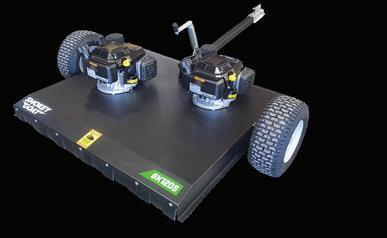


The Tararua, DairyNZled Plantain Potency and Practice Programme, with industry, government and farmers working together, is designed to research the effects of plantain and support farmers to successfully adopt it on farms.
Golden Bays Rural Service Centre report there is uptake of the Ecotain variety by local farmers however, they note it’s the only plantain studied, therefore other varieties may also be as effective.
The Tararua project aim is to support all dairy farmers to understand and adopt the grazing herb Ecotain plantain in their pastures to help improve water quality by reducing nitrogen leaching to waterways.
“This project is a blueprint for farmers to utilise plantain in catchments nationwide and cannot be understated,”
says project Dr Burger , the project leader for DairyNZ.
“Research shows Ecotain plantain in pastures can reduce nitrogen leaching from dairy farms by 20 to 60 percent. Plantain also has potential to reduce on-farm greenhouse gas emissions,” says Dr Burger.
From this project, 88 dairy farmers in the Tararua District now have plantain on their farms, and their learnings are shared with other farmers. The work is part of broader dairy sector commitments, programmes, and on-farm work to reduce farmer environmental

footprints. Plantain use is predicted to lead to flowon benefits to national and regional economies, and to save farmers more than $1 billion per decade.
The national programme’s farm trial research at Massey University has also shown Ecotain plantain can reduce nitrogen leaching from dairy farms by 20 to 60 percent, helping to reduce nitrogen losses to waterways.
Lincoln University farm trials in Canterbury, on lighter soils under irrigation, show similar trends. More data is being collected in both trials. The programme will
develop and tailor advice for farmers in other areas, including looking at the effects of different soil and climate conditions.
Farmwise consultant Brent Boyce says there is significant adoption of plantain in the Top of the South. He says it’s used in a lot of permanent pasture mixes, giving farmers another option to reduce Nitrogen escape. However, it is not used in areas where there are issues with buttercup - as in the eastern Golden Bay - as the sprays needed to control buttercup are lethal for plantain.
president.
Officials are undecided if this move is a complete exit or a suspension that may be restored. If it is not restored, then global grain prices will continue to be volatile and will impact New Zealand import prices.
Month-on-month prices were up 1.6%, which on a seasonally adjusted basis was up 0.9%.

FREE DELIVERY to Nelson / Blenheim / Takaka / Westport / Greymouth Visit us at 109 Bolt Rd, Nelson 2.1m -3.6m widths - NZ TOW BEHIND MOWERS Nelson / Blenheim / Takaka / Westport / Greymouth Visit us at 109 Bolt Rd, Nelson PTO Chippers - 3.5”, 5”, 7” and Kohler engines FROM $4,160+GST LOG SPLITTERS CHIPPERS TOW BEHIND MOWERS Nelson / Blenheim / Takaka / Westport / Greymouth Visit us at 109 Bolt Rd, Nelson stock, motorised & tractor powered PTO Chippers Kohler engines FROM $4,160+GST LOG SPLITTERS CHIPPERS TOW BEHIND MOWERS Nelson / Blenheim / Takaka / Westport / Greymouth Visit us at 109 Bolt Rd, Nelson Large range in stock, motorised & tractor powered Made in NZ Kohler engines FROM $4,160+GST LOG SPLITTERS CHIPPERS AERATOR Visit us at 109 Bolf Rd, Nelson TOW BEHIND MOWERS FREE DELIVERY to Nelson / Blenheim / Takaka / Westport / Greymouth Visit us at 109 Bolt Rd, Nelson Large range in stock, motorised & tractor powered Made in NZ Kohler engines FROM $4,160+GST LOG SPLITTERS CHIPPERS AERATOR Available in 2.1m -3.6m widths - NZ Made M2022 MWPROMO 06/22 SAVE $500 WINTER SALE FIRE & ECO FLUE PACKAGES SAVE $500 WINTER SALE FIRE & ECO FLUE PACKAGES 128 Tahunanui Drive, Tahunanui, Nelson Ph 03 548 5742 or email office@pmfireplaces.co.nz www.pmfireplaces.co.nz Conditions apply. Sale ends 31 August 2022 and is only available while stocks last. Freestanding fires Insert & Built-In fires ECO flue systems Wetbacks for water heating Parts and accessories Installation and servicing WINTER FREE FLUE SPECIAL On selected Masport and Metro Wood Burners While stocks last, ending 31 August 2023. News Farming TOP SOUTH MONTHLY August 2023 3
Plantain on the farm of Tararua dairy farmers Thomas and Jennifer Read with their children Annabelle, Eleanor and Jonathan. Photo: Brad Hanson.
NZ to host World Golden Shears event 2026
ELOISE MARTYN
A date for New Zealand to host an international shearing and woolhandling championship, the world’s most prestigious sheep shearing event, has been set. The Golden Shears World Shearing and Woolhandling event is scheduled for the 4th-7th March 2026 and being hosted back at the home of the Golden Shears – Masterton in the North Island.


Golden Shears showcases the art, skill and techniques it takes to be a world champion. The international event is held every 2-4 years. New Zealand has hosted the event five times since 1977 when the first world championships were held in England. The last time our country hosted the event was in 2017 in Invercargill.
Kerry Irvine, a Tapawera farmer and key organiser for the Tapawera shears and speed shear, says “It’s great for our country to host it. Many will travel from all over New Zealand to compete in the
events which range from novice to senior shearing and woolhandling and open-class events.”

The event scheduled to be held in 2026 will mark the 20th Golden Shears event. “I think it’s fitting to have to have the 20th event celebrated and hosted in Masterton where it all began.” Smiles Kerry.
Prior to the event being an international event, The Golden Shears was founded in Masterton, New Zealand, and while the World competition is held every 2-4 years Masterton hosts an annual national event which has been held in the town’s War Memorial Stadium each March since 1961, with the acceptation of Covid restrictions which saw the event cancelled for both 2021 and 2022.
The competition includes the Open championship, which is the most revered of all single shearing titles worldwide. The final is sometimes referred to as the shearing’s equivalent of the Wimbledon Open in tennis, six shearers each shear 20 sec-

ond-shear sheep, for which the fastest time was 15min 27.4sec, shorn in 2003. But the competition is about more than just the fastest time, and the winner is decided on time and quality penalty points, the winner being the shearer with the lowest score.
Recently Scotland hosted the world event in a purpose built faciality and saw over 380 competitors and 78 woolhandlers from over 30 different countries attend the four-day competition. This included 18 New Zealand competitors.
“It will be a big event,” says Kerry “There are individuals who enter and then teams going for titles in events such as machine shearing, blade shearing and woolhandling. There are lots of people out there who don’t shear but enjoy watching the sport. 2026 sounds like a long way away but given that we are past the halfway mark for this year I’d say it will come around quicker than we think – better save the date!”
Down to earth
DAMIEN O’CONNOR Minister of Agriculture
Toward the end of July I visited Lincoln University to give a guest lecture to soil science students and visit a couple of research projects being carried out by Lincoln and Ravensdown.
The talk was followed by a very good Q&A session. I was impressed by the breadth and depth of questions from these students. They asked about trade, industry challenges, food affordability, alternative proteins, vertical farming systems, regulation, the future of wool, impacts of current production systems on the environment, politics and, of course, soils. A question came about how we can tackle globally the persistent soil degradation that’s occurring.
Soil is precious to us, for the obvious reason that it provides our food. 95 per cent of our food comes from the soils of the world.
Even as to demonstrate the point, the word humus – the top nutrient-rich layer of soil – is the Latin word for earth. It’s also the root word for human.
Humility is derived from the same word, humilitas, one who is grounded or near to


the earth. ‘Down to earth.’ It’s a characteristic of Kiwis, which more than likely comes from our connection to the land.
According to the Food & Agriculture Organization (FAO), it can take up to 1,000 years to produce just 2-3cm of soil. While 95 per cent of our food comes from soils, 33 per cent of our soils are degraded and over 90 per cent could become degraded by 2050. Nutrient imbalance is one of the leading causes of degradation. The food we eat is a reflection of the soil it is grown in. Healthy soils means healthy, safe, and nutritious food.
Our soils are affected by how we use them. Our capacity


to feed 9.8 billion people in 2050 will depend on our ability to keep our soils alive and thriving. It follows that soil science is of vital importance.
New Zealand as a landmass has, geologically speaking, just popped up out of the ocean.
We’re not like La Pampas of Argentina, which has metres of topsoil. We have pockets of some of the finest soils – some are in Canterbury where a world record wheat yield of 17.39 tonnes per hectare was achieved in 2020 near Ashburton. But in many instances we are still developing the depth and fertility of many of our soils.
In September last year the
Government issued the National Policy Statement to recognise and protect Highly Productive Land from urban sprawl. 15 per cent of our land is classed as highly productive and once good soil disappears under asphalt and concrete it suffocates.
Soils have a critical to play a role in climate change.
The FAO have said that sustainable soil management can offset 5 - 20 per cent of greenhouse gas emissions. This is an area that I’m interested in.
The Government has been investing in research on this through the Sustainable Food and Fibre Futures fund, which has put over $50 million into scientifically validating the claims of regenerative farming – which makes much of soil carbon capture.


Cyclone Gabrielle saw enormous amounts of topsoil going out to sea. It highlighted how fragile the situation can be.
When we look after our soils, they look after us. The sustainability of our food systems at a fundamental level are in the hands of our soil scientists and the students digging into this fascinating topic.
Live Local. Shop Local. Does your vehicle need some attention? We’ll make sure you’re good to go! local for all your automotive (Cars, Caravans, Motorbikes, Trailers & Tractors) • Wheel Alignments & Tyres • All Vehicle Servicing & Repairs • Petrol, Diesel & LPG P: (03) 541 8121 F: (03) 541 9325 67 Whitby Road, Wakefield E: admin@wasl.co.nz W: www.wasl.co.nz 67 Whitby Road, Wakefield P: 541 8121 www.wasl.co.nz Lubricants to keep everything running smoothly Wide range of stock. 800ml – 200L by arrangement. Got something to buy, sell or promote? Contact us: sales@nmf.co.nz Farming TOP SOUTH MONTHLY 4 August 2023 News Farming TOP SOUTH MONTHLY
Kerry Irvine competing in the March Tapawera Sports Shears. Photo: Supplied.
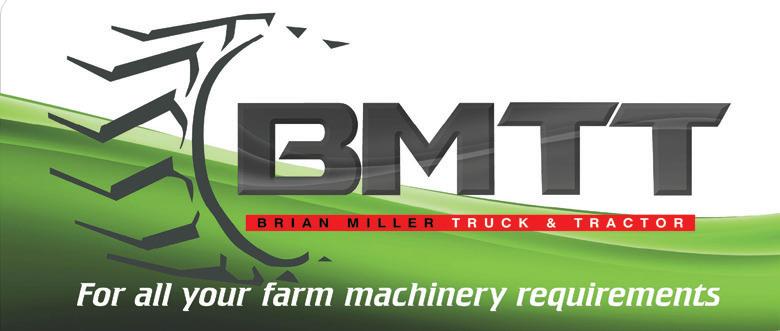



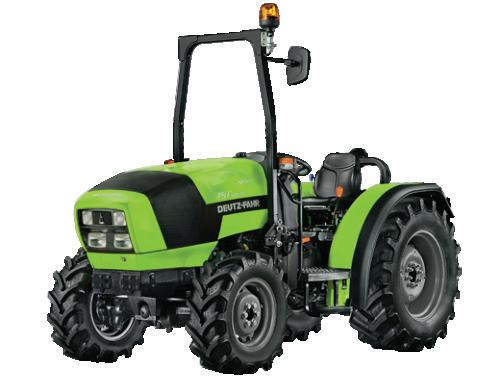




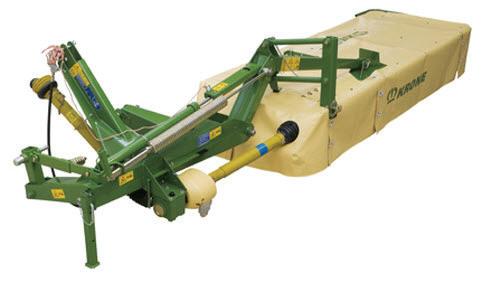

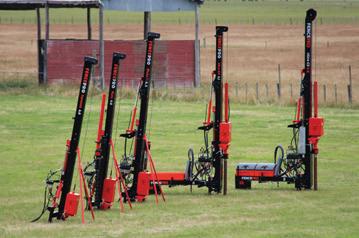
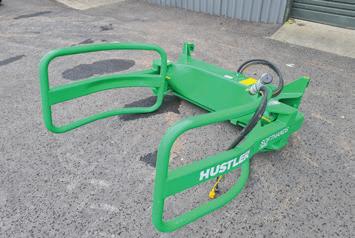


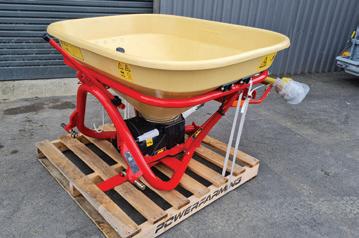
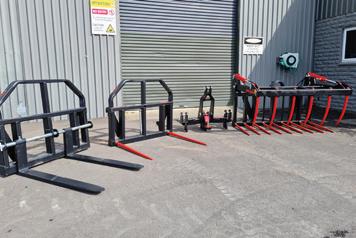
PH: 03 544 5723 Main Rd Appleby, Nelson 24 HOUR CALL OUT AVAILABLE TRACTORS AND FARM MACHINERY Full service facility for all makes of tractor, baler, mower etc... Parts for all makes and models - All oils, lubricants, filters and wearing parts BMTT FINANCE AVAILABLE ON ALL NEW AND USED TRACTORS AND EQUIPMENT Nelson Dealer for Sebco Fuel Tanks
JCB 55Z-I Mini Excavator from $99,800+GST Krone Easy Cut R320 Mower $32,900+GST Husqvarna
from $4,600+GST Sam Orchard Spreader $55,000+GST Now in stock Berti Park P 180 Mulcher $12,765+GST Hansa C13 Towable Chipper $6,517+GST McIntosh Double Bale Feeder with square bale kit $25,740+GST Howard Slashers 1.2 – 1.8mt from $3,675+GST Vicon PS403 Spreader $6,000+GST Fence Pro Post Drivers from $11,500+GST Rata Implements from $1,730+GST Hustler Soft Hands $3,890+GST Advert Farming TOP SOUTH MONTHLY August 2023 5
Deutz Fahr 80.4 Keyline Tractor Deutz Fahr 115 Cab with FEL Deutz Fahr Agrofarm 85 with FEL
Ride-on Mowers
One-Forty-One scores Fibre Producers Award
ANDREW RITCHIE
Marlborough-based 141 Kaituna Sawmill was recently presented with the Primary Industries Researchers and Innovators, Fibre Producer Award.
The Primary Industry Awards acknowledge the talents and toil of New Zealand farmers, foresters and fishers, and what they produce, in intensely competitive international marketplaces.
In this, the fifth annual competition, winners were selected from 65 nominations across nine award categories. The judges commented on 141’s relentless drive for improvement and added value as well as their reduction in greenhouse gas emissions, by 46% in the last decade.
Communications and Community Relations Manager Kylie Reeves, says 141 has invested $11.2 million in the conversion of the sawmill’s batch drying kilns, lowering annual emissions by 9%. General Manager Tracy Goss said that previously the kilns were fuelled by waste oil at a cost of $500,000 annually, but the new kilns utilise the sawdust produced on site. The continuous drying process takes two to five days per batch reducing the moisture from 60% to 12 to 14%.
The company utilises 99.9% of the log during the timber production process, according to Tracy. Bark is sold to garden centres for garden mulch, and last year a first shipment of wood chip was exported to Japan. Wood chips and pulp are used for paper or MDF. The sawmill has installed new laser scanning technology, resulting in higher grade product and increased efficiency. Tracy says that a one second reduction in the process time of each log means $1 million increase in revenue to the
company. As a result of operational upgrades, the sawmill has increased its capacity, processing 800 to 900 stems of radiata pine per day, producing 550 tonnes of quality, sustainable timber product.

Sixty per cent of product supports the NZ construction industry with the balance being exported to high value markets in Australia, Asia and the UAE.

The mill employs 95 staff, operating a 10-hour day with one day off every five days. An incentive
programme ensures that each employee shares in the company profits with 4% of the profit being divided between all members of staff.
Unlike the systems in place when Tracy first started in the sawmilling industry, extensive guarding of working machinery has been installed. Single point lockout switches are now in place at each point of entry to the mill. With the aim of creating a circular economy and reducing the amount of waste going to landfill
the company now uses micronized copper to treat posts destined for the ground. Traditionally vineyard posts were treated with a chemical containing arsenic and chrome, meaning that they could not be burnt, so many ended up in landfill. Now they can be recycled as fuel.
A new 1500 sq. metre treatment plant is under construction at Kaituna. This will again reduce the carbon footprint of 141, as previously the treatment involved transport of product to Tauranga or Christchurch.
The company’s connection to the community is of utmost importance. A community grants programme has been introduced supplying various organisations with over $100,000 during the past 12 months. Also, 141 has partnered with Habitat for Humanity Nelson, where their timber is much needed for community housing. Since winning an environmental award in 2021 at the Cawthron Marlborough Environmental Awards, One-Forty-One continues to build on its commitment to improve on employee’s working conditions, its impact on the environment, and the contribution to New Zealand’s export earnings, and the domestic building industry.
HYDRAULINK
VISIT US AT OUR NEW LOCATION 5 FACTORY ROAD BRIGHTWATER NELSON 03 542 4241 0800 80 66 66 www.hydraulink.com 6 August 2023 News Farming TOP SOUTH MONTHLY
NELSON HAS MOVED
Batches of timber pass through the kiln drying process producing clouds of steam. Photo: Supplied.
NZ’s All Black bull team
ELOISE MARTYN
Increasing New Zealand’s dairy breeding stock is one of the most important activities for the dairy farmer.

And critical to that are Artificial breeding (AB) technicians are responsible for getting cows in-calf. Each year a team of 900 AB technicians carry out around 4 million inseminations across New Zealand, ensuring the arrival of the next generation of dairy cows.
AB enables farmers to access top-quality bull genetics without the cost of purchasing or keeping stock bulls and removes the challenges of putting the right bull with the right females.
“AB offers lots of options such as sexed semen which has a 90% guarantee you’ll get a heifer calf, short gestation semen and several beef breeds which can all help to reduce bobby calf numbers,” says Bridget. “It’s also quick, easy and cost effective.”

“I didn’t grow up on a farm and I’ve never milked a cow in my life,” says Bridget Davis, an AB technician who services Tapawera in the AB season.
“Before I did this, I was working in the racing industry but got injured. I still wanted to work in the outdoors and with animals and someone suggested AB would be suitable as you needed good livestock skills and to be good with your hands – which was me.”
Bridget has been an AB tech for the past 25 years.
Training to be a technician consists of completing and passing the two-week training course, then spending a year as an apprentice - working alongside an experienced technician and completing four national unit standards administered by Primary ITO.

“It’s pretty inflexible during the two-week training course. They have a scoring system, and you need to be over 80 per cent in the first week and at 100 per cent the next week or you’re out,” explains Bridget.
The Tapawera area has changed a lot in the past five years with the conversion of dairy farms into hops. This has heavily impacted Bridget’s client base.
She says: “There’s around 3,000 less cows in Tapawera now, which is half of the
New DairyNZ chief financial officer
Robyn Marsh is thrilled to bring her experience and enthusiasm for agriculture to her new role, of chief financial officer, helping provide strong financial direction, vision and profitable management to DairyNZ.
Robyn grew up on a South Taranaki dairy farm and being part of a rural agricultural community is an big motivator in her career and way of life. She brings to the role a depth of knowledge and solid understanding of the sector. As a chartered accountant, Robyn started her career with Deloitte Touche Tohmatsu before moving to Fonterra in 2002. There she held several financial leadership roles, such as general manager of global accounting services, mergers and acquisitions.
Her immediate focus in this role will be developing a strategic plan for the coming year and to help align priorities with the overall strategy as everyone faces the new season ahead. She says, “there are significant challenges and opportunities facing the dairy sector today and into the future. Collaborating with our farmers and sector partners on innovative solutions is an effective way to drive a positive future for dairying. Working at DairyNZ is also a great opportunity to be a part of this journey, and I look forward to progressing my work in the sector to in this new role.”
cows I usually work with each season. It’s a big drop and when you are getting paid per cow the reduction of that many makes a dent in your income.”
The semen comes from a very small group of bulls that have been hand selected.
“I call the bulls up in Newstead the All Blacks Bulls,” laughs Bridget. “There are a lot of good bulls around but only 15 make it through to be the hand selected team.”
The semen is flown fresh from Newstead, Hamilton, and delivered in person. The AB technician fills long thin straws with the semen fluid.
The fresh or frozen straws are loaded into long stainless-steel pipettes and then manually deposited into the cow’s reproductive tract.

One ‘lot’ of bull semen can be used to make 3,000 straws.
Bridget says that due to the number of years she has been doing it she’s pretty quick at

insemination, however she notes that accuracy is more important than speed. All AB technicians are ‘randomly’ checked on each season to ensure they are following strict hygiene measures and operating in a safe way.
“With M. Bovis around you
doesn’t enjoy is seeing local farmers getting a bad reputation with false statements such as they don’t care about the environment.

“All the farmers I visit are fantastic at protecting the environment, they fence off their waterways and plant native trees and have been doing this for decades not just recently. Most kiwi farmers are good land caretakers, and it annoys me when I see them getting the rap for ‘dirty dairying’.”
can’t leave that to chance. I wash my gumboots at every farm and clean my gear each day. It’s good to have someone checking everyone is operating safely and responsibly,” Bridget adds.

One thing that Bridget
Being an AB technician is not for everyone, but Bridget loves it. “One thing I like about my job is the people, farmers are really resilient and down-to-earth. I love driving the back roads and enjoy the scenery,” Bridget says.
“The absolute coolest thing is when you see the calves in the shed and you know that they are your AB calves. It never ceases to amaze me.”
News Farming TOP SOUTH MONTHLY August 2023 7
Bridget Davis who has 25 years’ experience as an AB tech. Photo: Supplied.
There are a lot of good bulls around but only 15 make it through
Bridget Davis
Nelson AI company finalists at Hi-Tech awards
 ELOISE MARTYN
ELOISE MARTYN
Three years ago, a Nelson-based company developed an artificial intelligence technology platform that has enabled landowners across New Zealand to remotely evaluate their land and forests to estimate what they could earn from carbon credits, now the work has been recognised in Kiwi tech awards.
The platform uses remote sensing, artificial intelligence (AI) and automation to help landowners assess if they qualify for the Emissions Trading Scheme (ETS) and to measure carbon removed from the atmosphere by their forests.
The ETS is NZ’s main tool for actively reducing greenhouse gas emissions.
This is achieved through the awarding of carbon credits, with one credit representing one tonne of carbon - or equivalent greenhouse gases - removed from the atmosphere.
CarbonCrop was developed out of the Nelson Artificial Intelligence Institute, which first invented the prototype solution that CarbonCrop’s founders developed into a commercial model.
This year they have distributed more than $25 million in carbon revenue to their customers.
“It’s definitely not a small sum,” CarbonCrop chief executive Jo Blundell says.
“We have helped around 200 get into the ETS now using our technology platform. Carbon credits don’t need to be in the too hard basket.”
Recently they were finalists in three of the 14 categories at the
NZ Hi-Tech Awards.
The awards celebrate New Zealand’s most successful high-tech companies and highest achieving individuals.
“We were nominated in three categories: Most Innovative Hi-Tech Service, Most Innovative Deep Tech Solution and Startup Company of the Year.
“More than 50 companies submitted entries for Start Up of the Year and we made the final five,
which was pretty amazing as we were up against some incredible start up businesses across the country,” Jo says.
All finalists were required to attend a Q & A judged panel session in Auckland.
“It’s always gruelling to be questioned in front of a panel but we have a good story to tell.
“Most of our customers are native forest owners and, through working with us, they have really
increased their participation and the way they can benefit from the ETS.”
The awards night was held at the Te Pae Christchurch Convention Centre.
“It was a big event. There were around 1000 guests, including the Prime Minister,” Jo says. Even though the company didn’t pick up an award, Jo says it was worthwhile entering.
“While we didn’t win any awards it was fantastic to be recognised in the tech industry.”
Jo also says that being involved in the awards gave them an opportunity to reflect on the past three years.
“Starting and growing a business is hard work. It was great to take the time to look back. Without participating in the awards, we probably wouldn’t have done that.”
“Biodiversity, our native forests and our climate are things we want to fight and advocate for,” says Jo.

The company is hoping to make its technology available to other forestry professionals to help more landowners access and understand the carbon market and are looking forward to trying again for the awards next year.
Helicopter Agricultural Spraying and Spreading

• Gorse and Broom Control • Pre Plant Spray Outs • Post Plant • Crop Spraying • Fertiliser Application • Solids and Liquids • Seeding • Fire Lighting • Pest Control Phone Rob 027 578 8933 Office 03 523 9951 email: rob@murchisonhelitours.co.nz
8 August 2023 News Farming TOP SOUTH MONTHLY
Nelson-based CarbonCrop has helped around 200 landowners get into the Emissions Trading Scheme, according to chief executive Jo Blundell. Photo: Supplied.
Innovation, Flexibility & Maximum Productivity
5100DV/DS/DF TTV
The 5100D TTV specialist series perfectly combines performance, productivity and comfort, and can be used and configured individually, with a range of options to suit your exact needs.
• Market leading hydraulic systems with a closed circuit load sensing hydraulic pump providing a maximum of up to 100l/min of oil flow.
• Additional options available include Front Linkage and PTO, Front axle suspension, iMonitor control terminal and access to Deutz-Fahr’s Fleet Management software, plus much more



• Four available widths:
• 5100DV TTV from 1,077mm
• 5100DS TTV from 1,267mm
• 5100DF TTV from 1,441mm
• 5100D TTV from 1,795mm
IN STOCK NOW DEMO UNIT AVAILABLE
Flat operator platforms, integrated armrest controls and climate air conditioning creates the ultimate operator comfort
Category 4 filtration systems. Electronically selectable, the air intake is diverted through the carbon filter while the operator can monitor filter charge and cabin pressurisation through the dash display.

Parts 027 362 1429
Power Farming Marlborough Bryan Simpson
Sales 027 291 9576
Dave Jeffery
Service 027 365 1617 Blenheim 3535 SH 1,
03 573 7089
Russell McGhie
Riverlands
Advert Farming TOP SOUTH MONTHLY August 2023 9
Labour government has roading focus all wrong
National List MP Maureen Pugh compares blanket speed reductions with the condition of our roads.
I’d like to think most rural folk drive to the conditions.






The thing is, the last few years have seen a lack of maintenance that has left our roads in terrible condition. Add severe weather events to this and the results are roads of unacceptable, even dangerous, quality. National has put the spotlight on potholes to make the point to the Government that some serious maintenance is urgently needed.
Labour’s response was to impose ‘blanket’ speed restrictions on all manner of roads, both highways and in townships. I am very concerned that local councils have to undertake expensive consultation on reducing speed limits on local roads. In short, this Government put in place regulations requiring every council across the country to reduce some suburban roads to 30 km/hr and most open highways to 80 km/hr.
While the Prime Minister claimed earlier this year that he was putting the Transport Minister’s blanket speed limit reductions on the ‘policy bonfire’, speed limits will continue to decrease under existing regulations, and
this gives very little room for local councils to actually take note of their community’s feedback.
I believe people are wiser than this and Labour is treating Kiwis like fools by saying one thing, but
doing another. In practical terms people have places to go and work to do – for example a 10% speed

Bulk fuel delivery you can depend on
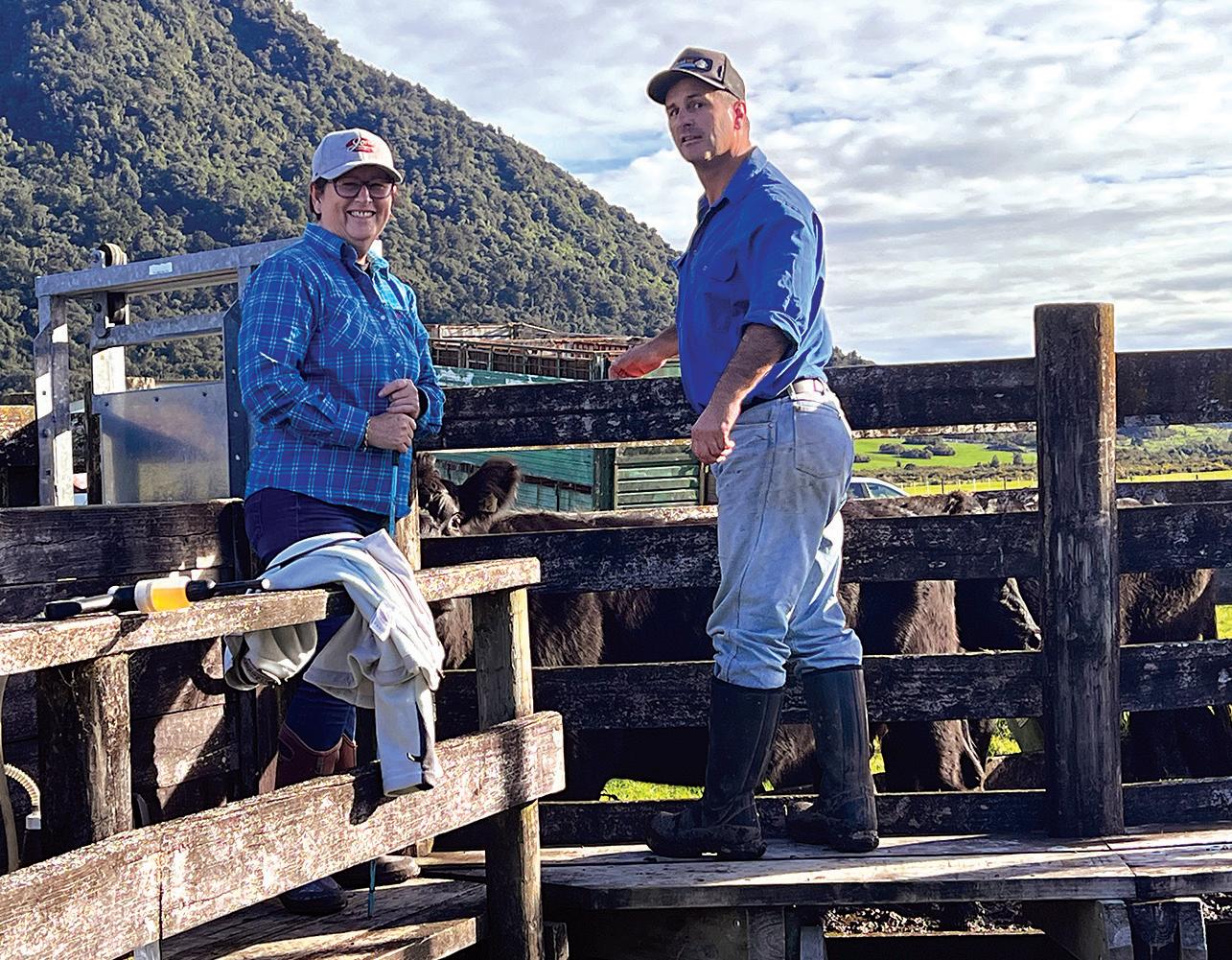

reduction on a freight truck adds another 10% to journey time. In isolated areas this often means drivers could run out of hours and have to park up before they can complete their deliveries. Besides the frustration involved, this ultimately adds cost to the goods carried, which the consumer must ultimately pay for.

Labour must stop forcing councils into long and costly consultations on speed reductions where they make no sense. National opposes blanket speed limit reductions and we will put a stop to Labour’s restrictions on both state highways and local suburban roads whilst retaining variable speed limit reductions around schools during pick-up and dropoff times.
In short, National will do away with all speed limit reductions where it is safe to do so. Roading has become a major source of feedback to MPs this year. People are sick and tired of the focus on blanket speed reductions and speed bumps rather than fixing potholes and maintaining and upgrading roads to a consistently safe standard.
Benson Haywood Territory Manager

Rural, farm and commercial customers rely on RD Petroleum’s premium delivery service for bulk fuel supply that is fast, efficient, cost effective and delivered on time, every time.
Bulk fuel supply, second to none.
10 August 2023 News Farming TOP SOUTH MONTHLY
Maureen Pugh with son, Shane, hard at work. Photo: Supplied.
Old time farming at ‘the Lake’
BARBARA STUART
The Borlase family have farmed at St Arnaud for three generations. Life at ‘the Lake’ these days is very different from the early days when there were only graveled tracks for roads, and no power or telephone. Now in her 86th-year year Pat Borlase recalls life at Top House as a girl and her early married life at St Arnaud without running water.
Carting buckets of water from the creek to their three roomed cottage for household use, tossing wastewater from washing and dishes over the fence and a bucket toilet down the path was all in a day’s work. Smiling cheerfully, she says: “Life was very different from the world of today.”
Pat met Murray Borlase on the bus from Nelson to St Arnaud when he was helping his brother who ran the Bus service. She had just returned from Auckland to help her family and she said “he sat beside me on the journey up to the Lake. When I got off the Bus Murray asked if he could see me again and that’s how it all started.”
The young Murray Borlase was running the farm with his brother and father Jack. Eventually he took over the property
which at that time included 500 acres at the head of Lake Rotoiti before it became part of the National Park.
Pat recalls how, in 1954, shortly before their marriage, Murray was the last person to drive cattle from the head of the Lake into Nelson where they were delivered to a butcher by the name of Clouston.

the benefits of Tiny Home Airbnb income
Trucks - if you could get onewere limited in those days carrying only eight fat animals. It took Murray several days to drive a mob of forty cattle to a paddock at the Nelson mudflats. First, he mustered the block at the head of the Lake and then drove the cattle down the lake edge, crossing two rivers, through the campground to
a paddock past where the school is today to a set of sheep yards, near Borlase Avenue. The next day he drove the cattle from St Arnaud to Lollypop Meads at the top of Korere Valley road, negotiating three streams on the way. At Meads they were penned in a paddock overnight.
Day three, Murray took the cattle down the Korere Valley, past Motupiko to a paddock opposite the Kohatu Pub. At this point his father Jack arrived with brother Jeff whose job was to go ahead of the mob on day four, clear the way, flag down cars, and keep the mob in a close bunch until they arrived at the family home in Spring Grove to overnight. Sometimes when droving down from the Lake, Murray would give the cattle a rest day at his parents’ Spring Grove property before taking them on. On day five, the final day of the drive, the mob carried on through Brightwater and Richmond onto Tahunanui. They wound around the waterfront and up Richardson Street, then down Washington Valley, past Auckland point school to the paddock which was their destination. Managing halfwild cattle through the urban areas of Nelson would have been
a real feat for any stockman.
Pat says, Murray served continuously on the Waimea County Council for thirty-five years, and when Murchison amalgamated with Waimea he represented Murchison north, Tuataki, Matiri and Nelson Lakes to Tapawera and Stanleybrook. Murray left school at the age of 14 to do his brother’s job while he was sick with polio. Murray also suffered from a hearing disability being born with only one ear drum which meant getting to meetings early so he was in a good position to lip read. During his time on the council, Murray had roles on the National Roads board, committees dealing with Hydatids, Weeds, Forestry and Fire amongst the many topics of council. Pat and Murray passed the farm at St Arnaud on to their son Philip who continues farming there. They shifted to Wakefield then Richmond. Sadly, Murray suddenly passed away in March 1999 at 67.
A shock to everyone, his work was recognised by people from Cape Reinga to the Bluff. In retirement, Pat held the position of Convenor of Meals on Wheels for the Red Cross for many years and has been a very active member of Rural Women NZ.
Farmers earn passive income with Tiny Homes


Looking to boost your income and achieve financial freedom?
Look no further. Renting out our charming tiny homes to locals or as an Airbnb is an incredible opportunity for passive income generation. Discover the amazing benefits that await you.

Experience the magic of tiny living
Step into a world of cozy simplicity and discover the magic of tiny living. Our thoughtfully designed tiny homes offer all the comforts you need while maintaining an intimate and efficient space. From the moment your tenants or guests set foot inside, they’ll be captivated by the unique experience it provides.
Earn passive income like never before Say goodbye to traditional rental properties with their high startup costs and endless maintenance. Our tiny homes are a hassle-free investment that delivers exceptional returns. With the increasing popularity of tiny homes, you’ll have a consistent stream of eager locals or guests waiting to experi-
ence this one-of-a-kind lifestyle.
Reach global audiences with Airbnb
Listing your tiny home on Airbnb opens the door to a vast global audience of travelers seeking unique and unforgettable stays. Tap into the power of this renowned platform and watch as bookings pour in from all corners of the world.
Minimal competition
While traditional Airbnb rentals face intense competition in popular locations, the tiny house niche is relatively less crowded. This allows you to carve out a unique market position and attract guests who specifically search for this type of accommodation.
Satisfy the demands of local explorers
Not only does Airbnb offer an international reach, but renting to locals can also be incredibly rewarding. Many people are searching for a change of pace, a weekend getaway, or even a long-term solution in a cozy, minimalist space. Cater to the desires of local adventurers and watch your bookings soar.
Unlock your financial freedom
Don’t let financial constraints hold you back any longer. Embrace the exciting world of tiny home rentals and unlock your path to financial freedom. Whether you’re seeking passive income or aiming to diversify your investment portfolio, our tiny homes are the perfect opportunity. From additional income and flexibility to unique accommodation styles and personal enjoyment, the benefits are numerous. All of our designs are in stock and ready for delivery to your farm. Take advantage of our Wintersale prices.
Curious about an Airbnb tiny home income? Join our open home viewing
If you’d like to know more, we invite you to an exclusive open tiny home viewing on Sunday 13 August, 11am-3pm. It’s an opportunity for you to experience our tiny home designs and explore how you can embark on this exciting venture. Mark your calendars and call to reserve your viewing time.
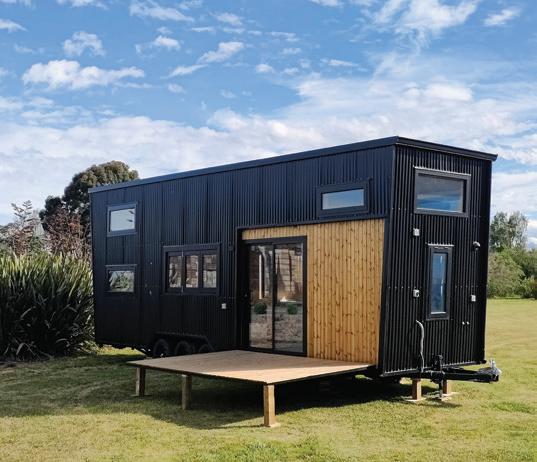
News Farming TOP SOUTH MONTHLY August 2023 11
Business Update. Adv. Get in touch 0210 857 4591 hello@arohanuitinyhomes.co.nz 512 High St, Motueka www.arohanuitinyhomes.co.nz Open: Tue / Wed / Thur 11am to 3pm Sat / Sun 11am to 3pm Discover
Three generations, from left, Jack Borlase, Murray Borlase in the middle with a pipe, and Phil Borlase. Photo: Supplied.
to
You’re invited
an exclusive open home viewing on Sunday 13 August 11am-3pm at 512 High Street, Motueka $149,000 $99,000 $149,000
New indigenous biodiversity legislation mandates significant natural area identification
ANNA BENSEMANN
The National Policy Statement on Indigenous Biodiversity (NPS – IB) will have an impact on landowners’ ability to clear native vegetation on private land starting from 4 August 2023. The primary objective of the NPS – IB is to ensure no net loss of indigenous biodiversity across Aotearoa New Zealand.
It encompasses provisions that district and regional councils must adhere to in order to implement changes to their planning regulations. One crucial aspect of the NPS – IB is the requirement for district councils to identify Significant Natural Areas (SNA) within their respective districts. If a landowner disputes the designation of an SNA, the Council must conduct an onsite assessment to verify the extent of the area in question.
Designating land within an SNA will trigger specific rules and policy guidelines regarding the scale and nature of clearance permitted, all aimed at achieving the overarching goal of the NPS – IB.
These rules will come into play during earthworks, subdivision, or land clearance activities within identified areas. If these activities exceed the permitted standards, landowners will need to obtain resource consents. Such rules are designed to prevent clearance that would diminish critical areas, fragment important biodiversity zones, or compromise buffers around SNA areas, thus safeguarding the quality and quantity of the remaining SNAs. The NPS – IB also extends to indigenous biodiversity outside of identified SNA’s, requiring all decisions to follow an “effects hierarchy.” This means prioritizing avoidance of adverse effects, followed by minimizing and remedying any unavoidable impacts. If these objectives cannot be reasonably met, biodiversity offsetting or compensation measures will be provided.
While the NPS – IB sets a fairly strict line, there are exceptions to accommodate specific situations.
These include provisions for constructing single new dwellings on landholdings without existing dwellings and permitting mineral extraction (excluding coal) that offers significant national public benefit, as well as aggregate extraction with similar public benefits.
The operation or expansion of existing coal mines is also exempted under certain conditions.
The NPS – IB also addresses situations where maintaining improved pasture for farming might affect an SNA.
In such cases, councils must permit the continuation of improved pasture maintenance, provided there is evidence that it is part of a regular, periodic cycle. However, any intensification, scale increase, or character change

of such activities beyond previous levels is not allowed. The impact of the NPS – IB on district plans will vary.
While some councils may not need significant changes due to existing provisions aligning with the NPS – IB, others may need to revise their planning regulations, potentially affecting farming practices near native bush areas.
For landowners, it is crucial to stay informed about any plan changes introducing SNAs, as they will impose some level of restriction.

Being aware of these changes will help them understand any additional limitations that may apply to their farmland. By implementing the NPS –IB, New Zealand takes a significant step towards preserving its indigenous biodiversity for future generations.
The journey may present challenges, but the long-term benefits for the environment and society make it a crucial and worthy endeavor.
Anna Bensemann, Senior Planner, Baseline Group Marlborough, Phone: 03 578 7299, Email: marlborough@blg.nz
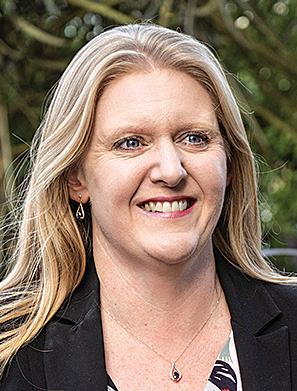

12 August 2023 News Farming TOP SOUTH MONTHLY
Got something to buy, sell or promote? Contact us: sales@nmf.co.nz Farming TOP SOUTH MONTHLY


Advert Farming TOP SOUTH MONTHLY August 2023 13
Book Review
Hogs, Dogs and Rifle by
Kim Swan
Published by Bateman Books, Price $39.99
TONY ORMAN
Marlborough hunter Kim Swan’s tenth book is an entertaining read. As a frequent contributor to hunting magazines and by virtue of her earlier nine books, she is well known in hunting circles.
Kim admits to being hopelessly addicted to the outdoors and in particular taking to the hills with her faithful dogs and rifle and just revelling in being there. She was born into an outdoors-minded family and was introduced to hunting as a youngster.
“I was born into a family of outdoors adventurers,” she says. “From an early age, I learned to embrace Nature and the natural world.”
Now quite a few decades later, Kim has no thoughts of retiring from climbing the hills accompanied by her faithful dogs.
“The fact that I am a woman, a mother and grandmother, sporting grey hair and a limp makes no difference,” she says.
In her tenth book “Hogs, Dogs and Rifle” just published, she has written 60 chapter accounts of her hunting adventures.

Kim has developed her own distinctive style of writing which blends self
Rural roads
STUART SMITH Kaikoura MP

mockery with humour. The “kill” is not nearly as important as being in those Marlborough hills and mountains, with her dogs and seeing game. Her hunting has an admirable blending of selective killing with mercy. In one chapter she frees a big red stag from entanglement with a wire fence and watches it go. Her book is an entertaining read, full of authentic, credible yarns.
We are blessed with breathtaking scenery in New Zealand but our rugged terrain poses significant challenges with building and maintaining our roads. Regrettably, many of our present-day roads were initially nothing more than narrow horse and cart tracks that have been widened and upgraded for modern vehicles. In contrast, Japan faces similar topographical challenges, yet their roads, particularly their highways, are purposefully designed to a high standard, thanks to their successful and well-managed economy. However, our rural roads often receive the least attention and investment. The winter storms of 2021 and 2022 wreaked havoc on the Marlborough Sounds roading network, and the slow progress of their restoration is incredibly frustrating. The repairs made after the 2021 event, while not completed before the 2022 event
struck, stood up quite well, which is encouraging. Nevertheless, for those living in the area, the inconvenience is considerable, and we still do not know what level of access will be returned to some parts of the network.
The completion of the Stantec report on repair options, and community consultation was welcomed but patience is wearing thin.
The preferred option will disadvantage some, but the success of the initial repairs demonstrates that building resilience into the Sounds roads is possible.
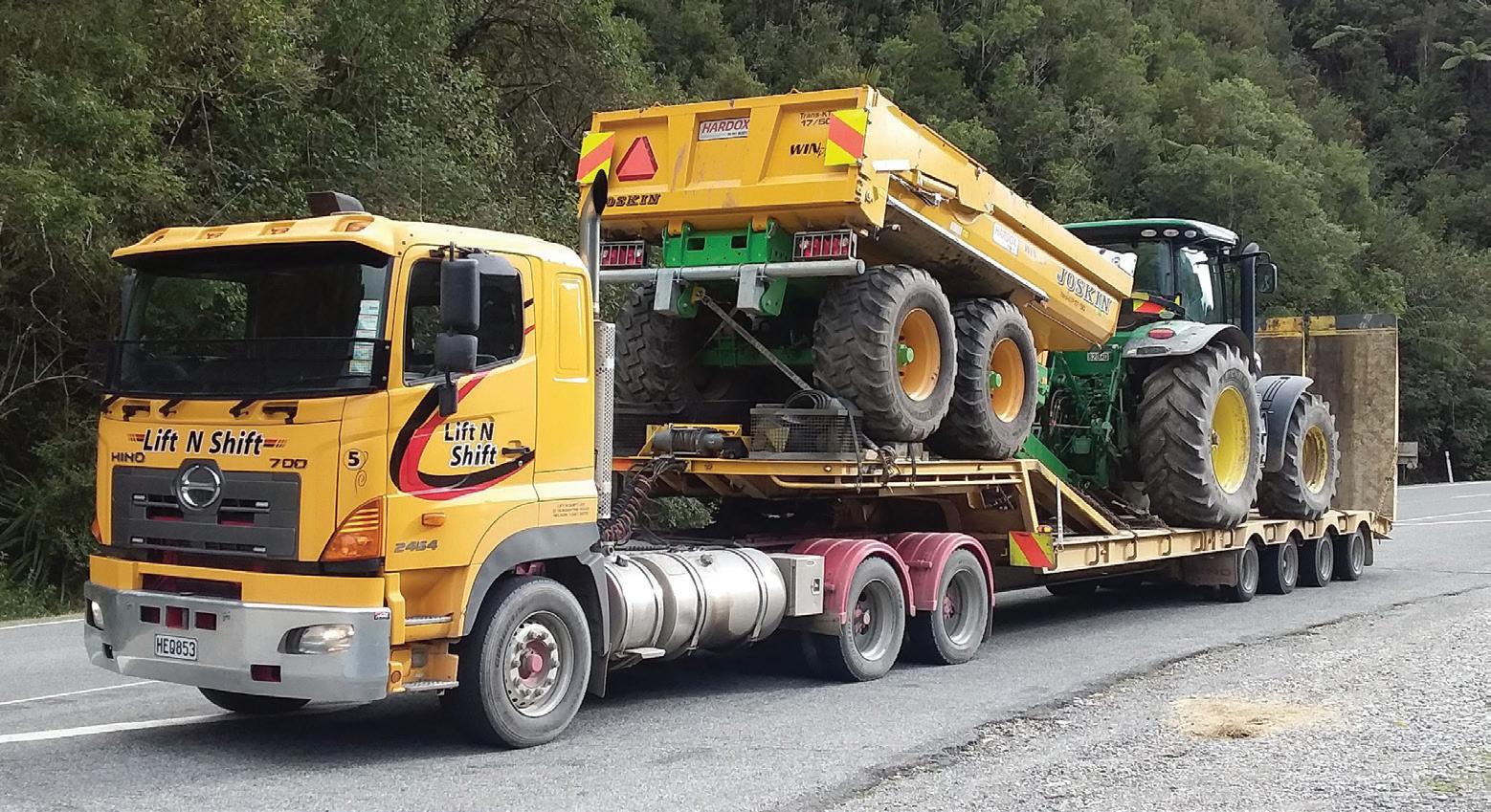
Even before the flooding, residents had expressed concerns about the lack of maintenance and regular clearing of culverts, and unfortunately, their warnings were right on the mark as culverts were a significant source of damage. Even now, there are re-
ports of roading staff cleaning ditches and depositing the spoil on the uphill side, where it will likely be washed back into the ditch during heavy rainfall events. Basic maintenance and common sense would go a long way in enhancing network resilience. The only positive outcome from this situation is for the road cone manufacturers, who are surely laughing all the way to the bank.
With the hope of El Nino sparing our rural roads from further damage this winter, we must rebuild them to a standard that ensures essential access for farmers and residents. This requires a commitment to enhancing and maintaining their resilience.
I assure those living in the affected area that I will continue to advocate for a speedy and fair resolution.
Lift N Shift Ltd 24 Venice Place, Stoke 03 547 0670 - 24hrs www.liftnshift.co.nz Modern well maintained fleet of trucks and mobile cranes We can move anything, anywhere in the top of the South Island, from cars, trucks, pipes & pools 14 August 2023 News Farming TOP SOUTH MONTHLY
Telling farmers what to do
GARRICK BATTEN
Telling farmers how to run their businesses has changed. An earlier message, often from various commentators and academics, was farmers should add value to their products. A few have succeeded, especially in the domestic market, but NZ farmers are efficient food producers inside the farm gate. Adding value for export products needs expertise and facilities from others, but also adds costs, so extolled benefits may not filter back onto farms.
Policies and messages targeting farmers are now dominated by Climate Change. Offsetting their current emissions will help us meet national targets, and pressure other countries to reduce global warming. So the latest whip is that future markets will reward sustainability. “...there will be a trade advantage for countries reducing emissions.” “... there are business opportunities for environmentally friendly exports.” ”... there will be a price premium for sustainable export market entry.” The message continues. Not only will farmers earn premiums but this could be the only key to market entry. “... not reducing omissions may risk products not being accepted.”
“... some of the world’s major food companies are demanding even more severe environmental targets.” “... unless we comply with importing standards some markets will find other sources.”
These are messages from politicians. And they can be real.
But farmers have been, are, and will continue to market their products – successfully, as last year’s results showed. They can distill market signals and make necessary changes. That is what marketing is all about, and returns and profit are influenced by many other factors than those pushed by these messages. So they need careful reading, recognising the political claim for NZ to lead the world in reducing GHGe, and the plan to impose the ETS on food producers if they don’t.
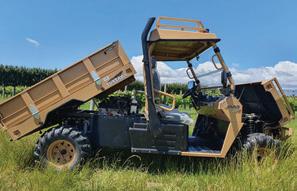
Other agendas and claims

support those messages for their own reasons, some not even related to pastoral products.

That is not a reason to dismiss them, but rather to put them in the context of all the other marketing messages that our farmers and their marketers, both those they own and those that they sell through, have to work with.
Do we need to try and feed the world and access all those markets? We can feed specific products to maybe only 40 million people in over 200 countries, all with different requirements and standards for their own environmental, biodiversity, animal welfare and labour conditions.
We are an export nation and the economy and our standard of living depends on the success of that business. There are experts who have been exporting successfully since earliest European settlement. They were not politicians. The government has a role to facilitate export business and our trade negotiators are one of the oil cans that make this happen. We can only hope that these political messages are able to be given the appropriate priority for maximum returns in all the wider and ongoing marketing negotiations.
Former farming leader speaks out on latest science

Former national President of Federated Farmers, Owen Jennings, is speaking out on leadership and climate change matters.
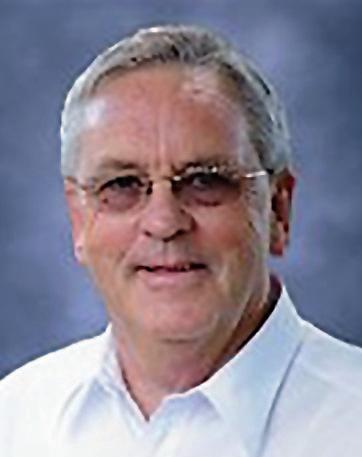
Owen Jennings held office in the national farming organisation from 1990-93, while living in Nelson.
He’s asking: “Where is the farming leader who will get their head around the existing science and pull the farming community together with integrity, unity and strength?”
Owen quotes from the last Inter-governmental Panel on Climate Change report (IPCC,) AR6, in which scientists have backed off from previous scenario reporting.
He says, ‘settled’ science has been quietly changed and updated. The same IPCC report admits that methane’s warming potential was over-stated
by 400%. “This changes the response for farming who were told they had over half the nation’s emissions,” says Owen.

“Even more recently science has revealed the role of methane to be much more miniscule and irrelevant.”
Leading climate scientists Wijn-gaarden and Happer have carried out research based on real air (previous experiments were carried out on dry air in a laboratory.) It shows methane
is only as effective as CO2 in absorbing out- going radiation. This research is strongly supported by peers Sheahen, May, Allison, et al. Findings shows water vapour to be more dominant than methane, making methane’s contribution to warming insignificant and non-tax-worthy, he claims.
Andrew Hoggard, past President of Federated Farmers, said: “The science is complex, this is a different set of data to explore. The scientists quoted are well regarded, but their work is not well understood enough for comment.”
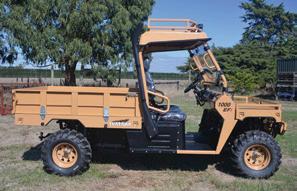

He also said current stock numbers in New Zealand have reduced and he believes current methane levels are at stable levels.
“This is reasonably accepted, provided animal numbers remain the same. In a policy sense we still need more time to work on CO2.”
Rural & Agribusiness Licensed REAA 2008 Colliers Marlborough 027 420 4202 Colliers Nelson 03 545 6920 There’s a legacy in this land Visit colliersrural.co.nz Your parents worked it, and theirs before that. Their decisions shaped its future. And now, yours will too. You feel the weight of that responsibility. To do the right thing, to honour the past while securing your tomorrows. But you don’t have to shoulder it alone. There’s strength in seeking good advice. Let that be your legacy. 11 Jacks Road, Renwick 03 577 5508 sales@cmmechanical.co.nz www.cmmechanical.co.nz TUATARA ATV SIDE-BY-SIDE VEHICLES CM Mechanical Limited Electric & Petrol, purpose-built for off-road travelling, designed specifically for New Zealand conditions. Rugged, dependable and powerful! COME AND CHECK THEM OUT NOW! News Farming TOP SOUTH MONTHLY August 2023 15
BARBARA STUART
OPINION
New president for Federated Farmers

WAYNE LANGFORD President, Federated Farmers
At the end of June I was absolutely honoured to be elected as the President of Federated Farmers at our national AGM in Wellington. We had a huge turnout for the meeting, certainly the largest I’ve seen in all my years with Feds, and we had some great discussion. Thank you to all the members
who have reached out since with words of wisdom or encouragement – I really do appreciate it. I’m excited to get stuck into the role, but it’s safe to say I’m feeling the weight of responsibility too. Federated Farmers are the largest rural advocacy organisation in the country, and I know many of you are looking to us for strong leadership as we try and navigate an uncertain landscape.
We’ve got some big challenges ahead of us with changing regulations, rising on farm costs, high interest rates, and profit squeeze putting pressure on farming families. There’s no denying that times are tough, but we can’t let fear, negativity or frustration divide us at the very moment we should
be coming together to find pragmatic solutions that will work for farmers and rural communities.
Federated Farmers have an important role to play in finding a pathway forward through strong and trusted relationships, and credible farmer representation that is well connected at the grassroots level.
Farmers can expect to see me bring my own style and approach to the role while also honouring the long and proud 124-year history of an organisation that’s served farmers so well.
I’m confident that I’ve got the right team sitting around the table to set us up for success as we continue to advocate strongly for the future of farming in New Zealand.
Government must work with rural sector on common sense stock exclusion rules
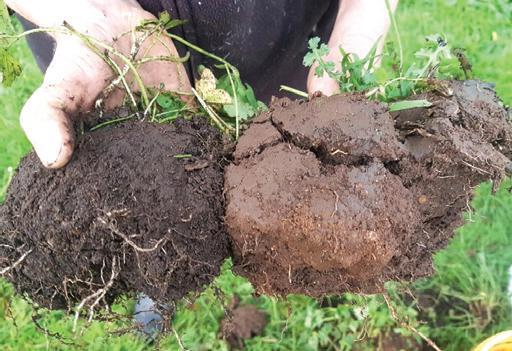
STAFF REPORTER

The government must enable farmers to adopt a flexible common sense approach to managing the exclusion of beef cattle and deer from waterways, says Beef + Lamb NZ (B+LNZ), Federated farmers and Deer Industry NZ (DINZ).

In a joint submission on the low-slope map consultation, the three organisations have called on the Government to work with the sector on a fair and workable solution to keep beef cattle and deer away from waterbodies. B+LNZ, Federated Farmers and DINZ believe Freshwater Farm Plans (FWFPs), either as an exception or alternative, may be the best option to manage exclusion of beef cattle and deer from waterbodies. They believe that stock exclusion requirements should be flexible enough for farmers to adapt and innovate to meet demands on their businesses, meet the needs of the environment, and allow regional councils to fullfil unique catchment values.
The joint submission, which was lodged on Monday, was informed by more than 340 responses from farmers to a joint B+LNZ, Federated Farmers and DINZ survey seeking feedback on the consultation. B+LNZ CEO Sam McIvor says while farmers understand the rationale for keeping animals away from waterways, concerns remain around the complexity and practical implementation of the options.
“Our initial analysis of the options indicates that Fresh Water Farm Plans, either as an exception or alternative, could be the best option,” he says. “However, there are still significant details to work through to fully understand what the proposals would mean for farmers. These details must be worked through with the industry. “B+LNZ, Federated Farmers and DINZ want to work with Government to help develop this detail to ensure that changes to the regulations are outcomes-driven, practical, fair, and workable for farmers.”
16 August 2023 News Farming TOP SOUTH MONTHLY
Capitalising on worldwide technological advancements




ANDREW RITCHIE
The establishment of Te Puna Whakaaronui was a key action in the ‘Fit for a Better World Acceleration Roadmap’ which was published in 2020.
The 10-year programme is committed to building a more sustainable productive and inclusive food and fibre sector. TPW is New Zealand’s first fully funded, food and fibre sector think tank. Its role is to help lead, coordinate and accelerate the transformation of the food and fibre sector by providing research, thought leadership, strategic insights and advice to sector participants and government.
Jarred Mair the Executive Director of TPW recently talked to a gathering of farmers at a meeting organised by Beef and LambNZ
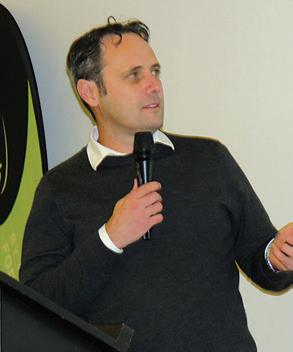


He said that the major drivers of change impacting global food production were climate change, shifts in consumer preferences, rapid technology advances, and geopolitical volatility.
TPW’s work focuses on solutions and opportunities arising from global change with the aim of accelerating sector transformation. Authorities suggest that food production will have to double
within the next 50 years to keep up with population growth.
Approximately 33% of harvested produce is never consumed due to a short shelf life.
Plant gene editing may be the greatest innovation in plant breeding since the green revolution. It has been used to make discoveries in plant biology and has the potential to create new crops with desirable characteristics.
New gene editing tools promise a rapid and inexpensive way to modify biological pathways that determine fruit quality, especially after storage.
From Pivotbio comes a nitrogen fixing bacteria sprayed on foliage, fixing nitrogen where it is most needed. Trials in corn, soyabeans and other crops have shown dramatic increases in yield with the added benefit of a lack of N leaching into the soil.



The University of Texas has produced a new material which harvests water from the humidity in the air. The water collects in hydrogel and remains stored there until exposed to sunlight.
This technology builds upon a 2018 breakthrough that developed a solar powered water purification innovation using hydro-


gels that cleans water from any source using only solar energy. Biochar may be the best largescale method to draw down large quantities of CO2 from the atmosphere and store it for the long term (sequestration.) When plants die or trees are harvested the carbon in the biomass is released to the atmosphere as it decomposes. Biochar interrupts this cycle taking roughly half out of circulation, this can be put into the soil or into other products. Incorporating it into the soil improves water and nutrient retention, improves pH, provides a habitat for microbiology and improves the catalytic exchange
capacity.
Reducing biogenic methane emissions to 24 -47 percent below 2017 levels by 2050 and 10% below by 2030 is one of the aims outlined in the Acceleration Roadmap.
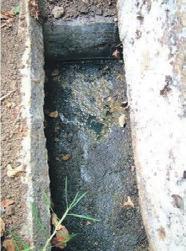
Unlike most microbes in the gut of sheep and cattle scientists believe that methanogens are not essential to digestion, so if their activity could be reduced emissions would reduce, without affecting the animal’s growth and health.
Asparagopsis is a red seaweed abundant around the shores of New Zealand and has shown an ability to reduce methane emissions. Further research is needed to develop large scale cultivation techniques and to address animal and food safety concerns.
On the energy front a Canadian company is experimenting with tapping into the heat from 3 to 4km beneath the earth’s surface using drilling techniques employed from the oil industry.
DEEP’s Saskatchewan geothermal project has shown the region’s geology hosts high temperature and high-volume fluids exceeding 120 degrees, suitable for power generation. Testing has produced over 20MW of power,

enough for 20,000 households. Unlike solar and wind generation that are dependent on the sun shining and the wind blowing, Thorium could offer a long-term solution to humanity’s energy needs. It can generate more fissile material than it consumes while fuelling a water cooled or molten salt reactor.
Thorium fuelled reactors could be much more environmentally friendly than their uranium counterparts. They do not emit greenhouse gases and produce less long-lived nuclear waste than present day uranium fuelled reactors. According to estimates the earth’s upper crust contains an average of 10.5 parts per million of thorium compared with 3pmm of uranium.
A major advantage of these power sources is that they can be established where the energy is required.

Jarred suggests that these and similar scientific breakthroughs are constantly evolving around the world, but they will not come to us, we must go out and acquire them. To achieve our goals, we must also overhaul our regulatory processes so that the acquisition of technology is not unnecessarily delayed.

Breakthrough Product Developed for your Septic Tank 0800 109 202 www.ecoworld.co.nz Also Available at: ATTENTION SEPTIC TANK OWNERS Before* After* Septi-CureTM is: Cost Effective Easy To use Improves Soakage Reduces Solids and Scums Eliminates Nasty Odours Reduces Costly Pump-outs *Results may vary A satisfied customer in Hamilton has been using Septi-Cure™ for over five years. He says this allows them to have an odour free septic tank with low maintenance costs. He also says that his service person is amazed at how well Septi-Cure™ works, keeping their tank in very good condition. Like us on Facebook 0800 296 324 www.awcorp.co.nz News Farming TOP SOUTH MONTHLY August 2023 17
Jarred Mair, Executive Director of TPW. Photo Andrew Ritchie.
No capsules, a chance to reconsider



Sheep farmers who would normally treat ewes with drench capsules before lambing have been advised to reconsider before reaching for the next long-acting alternative. Earlier this year the popular Bionic(R) drench capsule was banned for use by the Ministry for Primary Industries following concerns around the rate of release of drug from the product. Other long-acting alternatives are available, but this could be a chance to push the ‘re-set’ button on the use of these products, says vet and Beef + Lamb New Zealand Wormwise Manager Ginny Dodunski.
In an era of widespread drench resistance, Dodunski says if ewes are well-fed at an optimum Body Condition Score (BCS) and are not grazing pastures heavily contaminated by internal parasite larvae, then a long-acting pre-lamb drench should not be necessary. She says in the weeks prior to lamb-
ing and during early lactation, ewes are more prone to losing their innate immunity to worms. How much this impacts on the ewe and her production and economic outcomes depends on a number of factors. The first of these is the amount of feed on offer at lambing and in the weeks immediately prior to lambing.

“You will get a production response from giving ewes a long-acting drench if they are underfed, but if you really nail the feeding, get grass covers right at set-stocking and the grass coming up under the ewes after lambing, then the need for a long-acting drench product drops off.” Another factor to consider before picking up the drench gun is body condition. When ewes are at an optimum BSC of 3–3.5 (or above) then they are much better able to buffer a parasite challenge and farmers are less likely to get an economic response from treat-
ing those animals.
“There are a lot of good reasons for maximizing the number of ewes at a BCS of 3–3.5 in the flock.”




A third factor to consider is the level of worm contamination on the pasture being carried into late winter and spring. There will be production penalties if under stress ewes are fighting off thousands of worm larvae ingested with every mouthful. This is more likely when ewes are grazing pastures that have been grazed by lambs over autumn and winter.
Ultimately, Ginny would like to see routine pre-lambing drenching become irrelevant by shifting the focus to optimal feeding and management.
“A strategy for this season could be to separate multiple-bearing ewes on body condition score and only treat those who are under BCS 3 – with the aim of reducing the proportion of these ewes at pre-lamb time next year.”

The first wool sale of the season has largely picked up from where it finished for most average style wools offered at the last South Island sale. The key points of interest was the strong demand for the best style pre-lamb shorn and well-prepared crossbred fleece which is now reaching price levels not seen since December 2016. With the bulk of the second shear wool currently coming forward in the Nth Island we have seen the crossbred 2nd shear market cheaper on a limited offering. A good offering of Mid-micron fleece saw cautious bidding and while a slight improvement, most lots were passed in, failing to meet growers’ reserves. Dave Burridge South Island Auction Manager Sale Date: Sale Number: Movement compared with sale: Next South Island Sale Date: 20/07/2023 C03 29/06/2023 03/08/2023 Crossbred Lambs 27-29 Micron N/A 30-31.5 Micron N/A 31.5+ Micron N/A Crossbred Oddments $1.15 NC = No Change N/A = Not Available 79% SOLD 0.6268 NZD/USD ↑21c South Is. SWI Mid-Micron Hbd Fleece (28 mic) ↑ 4% $3.85 Hbd Hog (23 Mic) $10.70 200 250 300 350 Jul Aug Sep Oct Nov Dec Jan Feb Mar Apr May Jun Clean cents kg South Island Strong Wool Indicator (SWI) 2021-22 2022-23 2023-24 Crossbred Fleece Avg Price Kg Cln BEST STYLE ↑ 6% $4.15 GOOD STYLE ↑ 3% $3.60 AVERAGE STYLE ↑ 2% $2.60 POOR STYLE $2.20 Crossbred Second Shear 50-100mm Length - GOOD STYLE ↓ 5% $3.00 50-100mm Length - AVERAGE STYLE ↓ 4% $2.70 50-100mm Length - POOR STYLE NC $1.75 Deluxe A ccommodAtion U nits Options from 9m to 12m length built to your requirements Council Certified NEW 2 or 3 Bedroom Design SELF CONTAINED READY FOR CONNECTION TO SERVICES DELUXE SPECIFICATIONS • Superior Insulation • Double Glazed • En-suite Bathroom • Gas Hot Water • Portable Steel Chassis • Tow-bar and Wheels Option • PRICES FROM $90K +GST • SIZES 10M - 12M LENGTHS • 1, 2 AND 3 BEDROOM OPTIONS Building and Display site: 35 Anchorage Road, Hornby, Christchurch Ph: Pete Sturgeon 021 222 6680 or Gerard Faye 0274 808 217 • Email: pete.hiab@gmail.com ACCOMMODATION UNITS 18 August 2023 News Farming TOP SOUTH MONTHLY
Tasman Report

Our superb, new, easy-to-access Retail Store is now open at 18 Estuary Place Richmond, and Real Estate has a great new position among the PGG Wrightson and Fruitfed Supplies teams. I would encourage you all to come in and see what is on offer, and to catch up with the team. Doug Smith is often out and about in the wonderful Tasman countryside, and we are actively looking for a new salesperson to join our successful team - give me a call if you are tempted!
I don’t know about you, but the next few months are going to be pretty frustrating as we have to put up with all the political posturing prior to the election. All the usual suspects are coming out of the woodwork after a 3-year hiatus trying to get on the bandwagon, but I think this year we will be having a much more clearly defined campaign – with plenty of entertainment along the way if the avalanche of Ministers disgracing themselves in the last month is anything to go by. I guess we all have some skeletons in the closet and probably a good reason why I would not go into politics but honestly when you look at some of the things our public figures get caught out doing you would have to wonder what part of not getting caught out did they misunderstand? And will that hurt the Labour party in particular in the election run-up - I know the election will be won in the area of highest population in the greater Auckland region so for all the policies that make farming and rural life easier, they will have little bearing on getting a change of government – it will be a close run with the party vote very
EXCLUSIVE
important - In the meantime, we have FIFA Football world cup, All Black tests and Rugby World Cup to look forward to so hopefully we all get some results that put a smile on our faces.
KOROMIKO
Koromiko Home, Grazing, and Trees
3 2 2
PRICE BY NEGOTIATION Plus GST (if any)
VIEW By Appointment Only
My usual advice about getting off the farm and catching up with friends and families or doing something outside of the farm gate is as important as ever. PGG Wrightson are behind the farm safety campaign “Half Arsed Stops Here “ so as I always say “have a great month, and take care out there”
A 66.5-hectare (164 acres) mixed-use farm in a desirable location just minutes from Picton and the Marlborough sounds and an easy drive to Blenheim. The farm has a good balance of flats that can be used for finishing or making supplementary feed with the clean hill ideal for grazing. Currently operated as a deer breeding and finishing unit with some cattle, this could easily be used for dairy support, calf rearing, beef finishing, or perhaps viticulture in the future. An extensive lane-way system is in place for ease of stock. A 13-hectare stand of mature Pinus Radiata is ready for harvest, to provide an immediate return on your investment. A comfortable threebedroom, two-bathroom Glenroy home with huge living and kitchen areas will appeal to most.


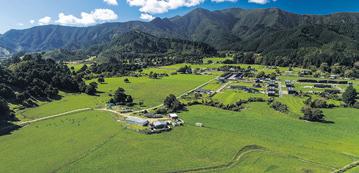

pggwre.co.nz/BLE37723
NEW LISTING
M 027 434 4069
E jblakiston@pggwrightson.co.nz
Greg Lyons

M 027 579 1233
E greg.lyons@pggwrightson.co.nz

BELGROVE
Premium Finishing Property
430 Wai-iti Valley Road, Belgrove

This quality grazing unit consists of 73.15ha in one title of flat fertile river flats. Bordering the Wai-iti River there is an excellent water right allowing multiple cuts for supplement production and making the property ripe for horticultural development. Currently run as a dairy support unit, the property is leased out for a good return until 1st June 2025. A substantial five-bedroom house, with a double garage, is sited in a sunny yet private position and is also currently rented out. Farm improvements are of a good standard and include cattle yards, an implement shed, a workshop, and a haybarn.

Reasonably rare these days, blocks with a bit of scale, water, and a contour that allows full utilisation, just on the edge of the Waimea Plains. The great thing about this property is that it has all the ingredients necessary for a wide range of options, let alone a good land banking investment.
Contact the agent for the Information Memorandum and a viewing.
5 2
TENDER Plus GST (if any)
Closes 2.00pm, Thursday 24th August 2023
(Unless Sold Prior)
VIEW By Appointment Only
Doug Smith


M 027 543 2280
E douglasjcsmith@pggwrightson.co.nz
Joe Blakiston
M 027 434 4069
Joe Blakiston pggwre.co.nz/NEL38137
E jblakiston@pggwrightson.co.nz
PGG Wrightson Real Estate Limited, licensed under REAA 2008 Helping grow the country
RURAL | LIFESTYLE | RESIDENTIAL
Advert Farming TOP SOUTH MONTHLY August 2023 19
Joe Blakiston 027 434 4069
Farmers: Got your end-game sorted?
BARBARA STUART
How many families have a succession plan in place? It’s the one thing 40 per cent of farmers avoid, leaving a mess for the next generation. The experts tell us ‘It’s a farmers end-game. The point at which you move on to a retirement lifestyle.’
Federated Farmers, in conjunction with Forsythe Barr, held a Farm Succession Planning evening in Murchison recently with Martin Hawes. Martin came out of retirement as a financial advisor and author of 23 books on personal finance to talk to local farmers. He covered succession planning, off-farm investing and the suitability of family trusts, taking into consideration changes in legislation to help protect assets against unforeseen circumstances. Martins’ advice is to start the conversation now. Don’t be like Shakespear’s King Lear, who had three daughters and became bogged down by emotion, didn’t record anything and the two daughters who he entrusted pulled out and let him down in a tragedy.
El Nino summer predicted
DARREN CRAWFORD FENZ
Martin said one option is to sell the farm and divide proceeds between parties, which is the easiest, or to create family buy-in through a big family meeting. Importantly, for this option he suggests an independent chair. He said the family must be prepared to make concessions and advised having a set agenda, allowing time for each member to speak and say what they want.
“Also, the retiring owners should put their own welfare first. The next generation has time to make their future, a retiring farmers life’s work is ending.”
New legislation is coming into effect and impacting on the Family Trust Act of 2019, making trusts less attractive. However, he believes they can still be useful for farm succession, giving discretionary flexibility.


A trust cannot be overturned.
Martin is a strong believer in offfarm investment to fund retirement and provide liquidity. He recommends ‘buying in the gloom and selling in a boom’ if at all possible, and, importantly, taking professional advice.
After three consecutive summers of La Niña type conditions for the region, bringing cooler than average and more moist conditions, predominantly from weather systems originating from the North and East of the country, we are forecast to experience an El Niño Summer.
NIWA long-term forecasting for the coming spring and summer show oceanic and atmospheric indicators pointing toward a positive swing to El Niño conditions. As of writing this report, New Zealand has entered a weak El Niño phase, signified by an increase in stronger colder southerly systems moving north from Antarctica. It was only just over a month ago, we were all enjoying a mild June; this was the neutral phase from when the La Niña system was decreasing, and El Niño was yet to start showing itself. Preliminary predictions are showing that weak El Niño conditions will persist into spring and strengthen to become a strong El Niño by summer.
To put that into perspective, the summer of 2018/2019 when we experienced extended hot and dry conditions, leading up to the Pigeon Valley fire in early February of 2019, was considered a weak El Niño.
How the district will fare from strong El Niño conditions is yet to be seen, but with the right planning, we can be prepared and reduce the risk from wildfire.
We are still a good four months away from conditions where we may start to see
warmer and drier conditions start to affect the district, but this lead time does give us the opportunity to start planning fuel reduction operations well in advance to help mitigate the risk in key high-risk areas. Ensure fine fuels (grass/scrub) are reduced from high-risk margins (roadsides, forest boundaries, reserves, rural and lifestyle blocks), recommend a solid plan to do so in early spring.
conditions are forecast) occur or a change in the fire season from Restricted to Prohibited. Follow all conditions stated on your fire permit, they are there to protect you, your property, your neighbours, and the community from unwanted fires
Wind is the main driver of wildfires, if lighting your permitted burn pile, ensure the wind is no stronger than 10kmh, also check the forecast for the following days and avoid lighting up before a forecast weather change as approaching fronts often bring unsettled atmospheric conditions.
Inspect and maintain formed firebreaks/margins to ensure they are clear of vegetation and are wide enough to serve the purpose they are designed for.
Ensure all named roads are kept drivable and to a standard suitable for a large 4WD fire appliance to access without losing their beacons and equipment to low hanging branches and to help keep our people safe from entrapment by fire. Our fire trucks need a minimum 4m x 4m clearance. Ponds and water sources are maintained, accessible and clearly sign posted.
Never store damp hay as there is a strong likelihood of spontaneous combustion occurring, especially 2 – 7 weeks following bailing Visit checkitsalright website to check if it’s alright to light your permitted fire, permits may be suspended at short notice if ‘spike days’ (hot and windy
During high fire risk periods, ensure if undertaking operations in or around dry vegetation that a pressurised water supply is readily accessible. During high fire risk periods, schedule any possible spark hazardous work, welding, grinding or ploughing outside of the peak heat of the day, mornings and evening cooler temperatures reduce the risk. Look ahead to the driest months, is it feasible to forward plan and schedule harvesting/silvicultural operations to compartments that are on the cooler damper southern and eastern aspects of your forests and estates. Remember, once things start to rapidly dry out, the window of opportunity to reduce fuel risks is greatly reduced and, in some cases, it is just too late to safely do so, schedule those fuel reduction tasks early in late spring.
Sign on and receive daily spark hazardous updates and guidelines for operating during high fire risk periods – contact nelsonmarlboroughdistrict-CRRTeam@fireandemergency.nz

24 Hour Call Out Service 03 578 4299 sales@cuddon.co.nz | www.cuddon.co.nz Irrigation NZ Certified Designers • Pump & Filtration • Vineyard Irrigation • Rural Water Follow Cuddon on Facebook Nelson: 78 Selwyn Place Ph: +64 3 548 8349 Richmond: 66 Oxford Street Ph: +64 3 543 9090 www.pittandmoore.co.nz Legal protection for your farm through the stages of life Make a plan to protect your farming and rural assets now and in the future. Inheritance/estate planning and wills Protecting assets Enduring powers of attorney Succession planning 20 August 2023 News Farming TOP SOUTH MONTHLY
How the district will fare from strong El Niño conditions is yet to be seen
Take control of your wintering or prime finishing land?



1409 Collingwood-Puponga Main Rd, Collingwood



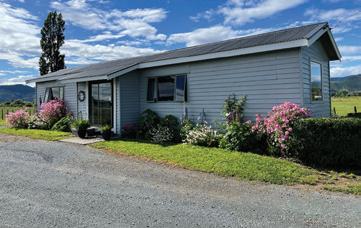
Attention all farmers and agricultural investors! Have you been looking for a handy location to establish your dairy support block or prime beef finishing block? Look no further than Collingwood-Puponga in Golden Bay!






We are proud to offer this productive 43-hectare block, offering 34 Ha approx. of flat easy to gentle rolling land that would be the perfect add on to and existing property or a beef farmer wanting prime finishing country. With fertile soil and a sound fertiliser history, as well as gravity fed water system, excellent 5 bay shed, together with the old cow shed with power, this block is ready for you to make it your own. This property offers panoramic views of the surrounding hills and out into the open water of Tasman Bay, with Farewell Spit in clear view - explore the option to build your dream home making the most of this stunning spot. This block has something to offer to everyone, give me a call today.
Price By Negotiation
Toby Randall
M 027 233 9170
They should have called it Pleasant Flat
104 Bryant Rd, Brightwater

Pheasant Flat is located on the outskirts of Brightwater, boasting options galore when it comes to the ideal lifestyle property – an easy stroll or bike down the cycleway, for coffee, cake or a colder beverage, yet far enough away to create your dream lifestyle, without the neighbours peering over the fence. The recently renovated one bedroom, one bathroom cottage with a large garage and workshop would make an excellent home for a young couple starting out, or for those who are young at heart with empty nests. Nest still full, or looking to build the dream home?? There is building consent to build a second dwelling in place. Zoned Rural 1, a resource consent in place irrigating up to 8.64 HA, creating some real passive income options, alongside the possibilities of renting out the cottage once you build? Other improvements include farm sheds and cattle yards. This could also be an excellent land bank, so why not buy now, enjoy this great property and potentially watch your investment grow?
$1,400,000 + GST (if any)
Toby Randall
M 027 233 9170
Advert Farming TOP SOUTH MONTHLY August 2023 21
Federated Farmers in Golden Bay
PAX LEETCH
Golden Bay Meat & Wool Chair
Having recently returned from a trip to Wellington for the Federated Farmers AGM and the Primary Industries New Zealand (PINZ) conference, I thought I’d put pen to paper and record my thoughts on the events of those three days.

Firstly, the Meat & Wool Council AGM. Our chair, Toby Williams, returned to the role unopposed, and our new vice chair is Simon Cameron, a beef farmer from South Westland. Our executive is Richard Dawkins from Marlborough, Anthea Yule from Hawke’s Bay, and Dean Rabbidge from Southland. Many thanks go to Nelson’s Kerry Irvine for all his work and input over his time on the executive.
A lot of our AGM time was taken up with voting for the executive. It was the first time since I’ve been involved in Feds that we have had more people putting their hands up for the executive than positions on it, which is a really encouraging sign as to the health of the Meat & Wool Council.
Time was also spent on deciding which National Board candidates would get our industry vote, and on deciding our position on the remits being presented at the National AGM.
Other matters discussed included tail docking length and use of


pain relief, drench resistance and product availability, and lamb processing at meat works this coming spring.
A slight word of warning on the latter for those of you with lambs still to finish this season: we were told that bobby calf kill will take precedent over lambs this spring. Last year a lot of farmers got burnt when the meat processers couldn’t take their lambs in a timely manner and a lot cut their teeth before they could go. Best thing to do would be to have a yarn with your stock rep and make sure you are both on the same page as to your expectations for how the rest of the season will play out.
The PINZ conference was a very interesting couple of days, with some very high-class speakers and interesting topics. Day 1 was opened by our Prime Minister Chris Hipkins, who was then followed by the leader of the opposition, Christopher Luxon. Predictably, Chris Hipkins painted a rather glowing picture of agriculture’s place in NZ, and of NZ as a whole, whilst equally predictably, Christopher Luxon followed with a very grim summing up of where we are as a country at present, and just how bad things have got over the last 6 years. Maybe the truth lies somewhere in the middle?
The one thing they both agreed on is what an important part of NZ’s economy and society agri-

culture is. But I guess, given the crowd, they had to say that right?
Hipkins said that trade is front and centre of his international visits, and he plans to head several trade delegations per year whilst in office. Having just returning from China, he said that the China/NZ relationship is in good shape, and our business relationship is thriving.
Your One Stop Shop!


China is going to continue to be our most important market but there is also going to be huge growth in SE Asia over the next few years. China’s food self-sufficiency is dropping and year on year it is less able to produce enough food for its people. There is a change in demographics there with a forecast doubling of the middle-income earners over the next decade. This points to a higher demand for high quality food products and NZ is well placed to take advantage of this.
Several speakers painted a picture of a world of consumers who are increasingly aware of where their food comes from and how it’s produced.
Environmental stewardship and carbon footprint are especially important influencing factors for our customers but only up to a point. With inflation and the high cost of living putting pressure on families around the world most people’s ‘green-ness’ seemingly only applies up to a certain price point. At the end of the day, paying a premium for sustainable, etc, product is a luxury for when times are good, but when times are not so good purchasing decisions revert back to price and affordability.
What is being seen though is evidence of these environmental practices being a requirement from further up the ‘food chain’. Global food companies are showing preference to sustainable producers and also sustainability practices are being used as a tool of regulation by our trading partners.
Christopher Luxon stated when talking agriculture and carbon pricing that “doing nothing is not an option, and consumers and customers around the world do expect us to be operating at the highest levels of environmental standards.
The bottom line is that we just cannot give our trading partners
the excuses that they need to protect their own farmers with from the best agricultural producers on planet earth.”
To me this points to environmental factors being a future requirement of market access rather than an opportunity for market premiums.
We had other presentations on many topics including developments in gene technology, primary sector workforce, GHG emissions, science, technology and innovation in agriculture and NZ’s infrastructure vs extreme climatic events.
All these discussions were steered towards the conference’s goal of ‘supporting the sustainable growth of the primary industries in Aotearoa’.

There was general consensus that the future looks pretty bright for agriculture in NZ, we just need to get through the 12-18 months first. There are definite headwinds, with inflation and high interest rates combining with a soft international market for our products, but we are hopefully at the top of that cycle now and things are set to improve form here on out.

All in all it was a really interesting few days and a great chance to catch up with old acquaintances, meet new ones and rub shoulders with a vast array of people from across the primary industries of NZ.
New owners in the seat at local motorbike shop
Daniel Morton, Marlborough Motorcycles new director, is no stranger to the industry, feeling most at home on the back of a motocross bike. Looking forward to bringing his own touch to the business, Daniel is excited to go back to his roots. Taking over the business at the start of July, Daniel, and wife Amanda, look forward to building on what is already a solid business and helping facilitate regular community events for the off-road sector. “Brendon and Cathy Wadsworth have done the hard work getting the business to where it is today. Amanda and I just want to come in and continue to grow it, giving the business a fresh start and a new modern look. We are excited to continue working with the existing team of staff. Having a tightknit and enthusiastic team is massive, it’s such an important aspect of the business for us. I love to create a rapport with people and create a cool work culture and environment.”

Daniel has grown up in the motocross scene, as a rider,

and worked for motorbike dealerships in the past in both sales and parts roles. He took a break from the industry in 2015, training as a builder and then running his own building business, and a part time trail rides business. “My dad rides, I ride, and my son loves to help me work on my motorbike too. The industry is not foreign to me at all. I loved what we were doing with the building company, but I felt a pull towards my first love which is motorcycles. I have been involved in the scene for many years and it is nice to come back to it in this capacity.” Growing on the core of the business, the couple are excited to support and sponsor com-
munity motocross events and further promote the off-road sector, water sports, and farm vehicles. “My three-year-old has already shown an interest in dirt bikes, so we want to promote a kids range of bikes and gear, and kids’ rider coaching. I’ve got the energy and the hunger to do it. I want to get in there and have a good shop presence and support local riders, that type of thing.”

Stocking a range of Can-Am models, Daniel is currently organising an off-road trip from Marlborough to Hanmer and back in November. “It will be a showcase if you will, of the capabilities of the type of vehicles we sell, combined with an epic trip! It is cool country, that a lot of people haven’t had the opportunity to visit before. We have loads of ideas like these that we are looking forward to implementing in the future. It’s exciting. We want to create a bit of a buzz around the region, the brands we sell, and especially the shop.”


2 Warwick St, Mayfield, Blenheim 03 579 2500
• On Road • Off Road • Vineyard • Farm • Hedge • Lawn • Kea Trailers • Service • Parts • Finance
Business Update. Advt. 22 August 2023 News Farming TOP SOUTH MONTHLY
Amanda and Daniel Morton
Quality Used Tractors and Machinery


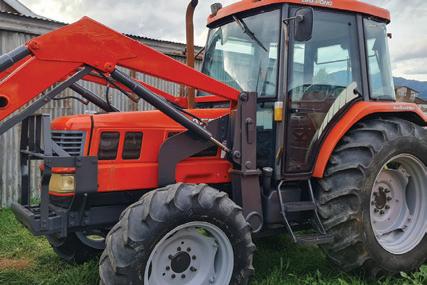

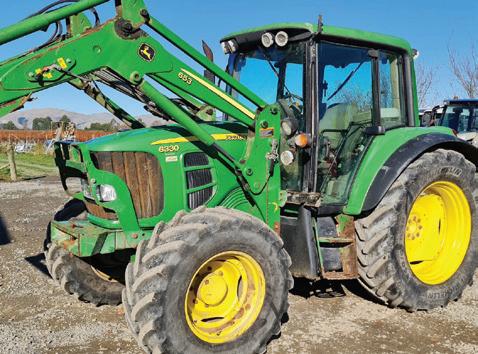
• Massey Ferguson 245 Power Steering Hustler Forklift very tidy - coming in
• John Deere 2250 4x4, non cab, GNS loader, good tractor - coming in
• Iseki 2160 22hp hydro in tidy order - $5,750
• Ford New Holland 7840 SLE and Pearson loader - $23,000
• Massey Ferguson 188 and loader - $9,750
• Small 1.5 slasher and also 1.2 model - $1,500
• Giltrap 3pl log splitter - $2,250

• Heavy duty 7ft back blade - $4,500
• Pallet forks front uro and rear - from $500
• Hustler front fork lift suit 135 MF
• Austin 3 Mtre Heavy Duty Cambridge Roller
$5,500
• Rata vineyard cultivator crumbler range of sizes available
• Duncan 633 cultivator crumbler - $5,500
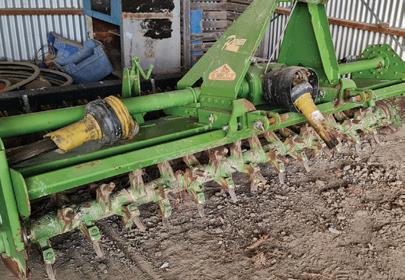
• Dual wheels Snap/locks 38” 36” 34” 30” from - $2,200
• 13 Tyne Yeomen Chisel Plowel- $2,000
• 9ft Cambridge roller - $1,800
• Trimax 1.8 Vineyard Mower, tidy order - $3,000
• Hydralada double in-row vine trimmer. Fully serviced with joy stick - coming in
• Mole plough good order - $1,850
• Silvan 600l herbicide sprayer electric controls$5,000

• Celli Tiger 190 Rotary hoe new blade 3m wide cage roller - $9,500

• Hustler SL 700 2 bale feeder very good order$11,500
• Celli Pioneer 170 Spike Rotar very good condition - $12,500
• Lely 280m hay mower center pivot hay mowertidy order - $11,500
FARM MACHINERY & REPAIRS LTD Graham 021 228 3956 All prices plus GST
Berti TFBY 160 in very good order $6,750
Bucktown 1.8m h d mulcher hy side shift like new good hammer flails - $6,750
Massey Ferguson 5713 prem model Dyna 6 4 remotes 3300hrs prof model loader. Good rubber. 5 Star screen fitted (being prepared) $95,000
Celli Pioneer 140 spike rotor original spikes excellent condition - $14,000
Hustler Katipo 1150 l sprayer 12m hy boom reel and Raven GPS like new $10,000 under new price
Daedong 80hp low hours great order - $22,500
Massey Ferguson 245 Tidy 50hp tractor serviced and new seat, good tyres, great small block tractor - $10,500
John Deere 6330 premium 110 hp JD self levelling loader very good tyres, fully serviced and in good condition. $55,000
Advert Farming TOP SOUTH MONTHLY August 2023 23
Kubota M100GX 4X4 Near new 1300hrs very good order $56,000
Kaikōura’s deep seabed rapidly recovering from 2016 earthquake, says NIWA
NIWA and Victoria University of
Wellington PhD student Katie Bigham says that the Kaikoura area is showing astonishing resilience to the physical and biogeochemical disturbance caused by the earthquake.
“The earthquake caused a highly complex ‘full canyon flushing event’ that reshaped the canyon floor and transported 850 metric megatons of sediment out along the Hikurangi Channel. Inevitably, this was devastating for the abundant marine life in the area, which is New Zealand’s only deep-sea marine reserve.”
“However, it also provided a rare opportunity to study the impacts of an underwater earthquake on seabed communities. And encouragingly, the ecosystem is showing great resilience – many of the marine organisms have returned, with some parts well on the way to being fully recovered,” said Katie.
There was already lots of information on Kaikōura’s deep-sea environment due to earlier surveys in the canyon, including thousands of images and datapoints. NIWA

was therefore able to compare that information to images collected several weeks, months and years after the earthquake.
Those seabed images taken shortly after the earthquake showed that the “canyon flushing event” had been catastrophic for the once productive benthic com-
For over 40 years Nicholson Protective Coatings have supplied abrasive blasting, water jetting and industrial painting services to a myriad of industries New Zealand wide. The largest protective coatings applicator in the top of the South Island, NPC supplies maintenance contracts to many of New Zealand’s largest companies, applying protective coatings to ships, bridges, bulk fuel storage tanks, lighthouses and large scale civil engineering projects nationwide. Based in Nelson with a staff of 40 plus and a wide range of fixed and mobile water and abrasive blasting equipment no project is too big or small for their capabilities.

NPC has a lengthy history of working in the dairy sector, ensuring that milking sheds, yards and sheds are maintained to the high standards expected in today’s primary production environment. Using water blasting equipment ranging in capacity from 3000PSI to 40,000PSI NPC can remove unsound/ flaking paint quickly and efficiently, leaving high animal traffic and chemically cleaned surfaces clean and ready for new paint. Our experienced staff can then apply the appropriate Carboline products to bare block, concrete and metal surfaces using various application methods. Coating these structures ensures the maximum lifespan for your investment, as well as improving cleaning and hygiene requirements.
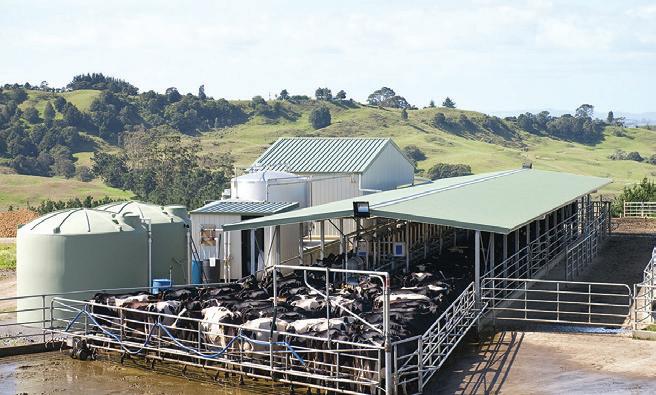

If you want advice as to what can be done to protect your infrastructure in a timely and cost effective manner then Nicholson Protective Coatings would love to hear from you. To discuss your project with one of our experienced staff simply call us on 03 547 7407 or email us at admin@nicholsons.co.nz

munity on the seafloor. However, within months, there was a notable increase in some species, including fish and sea cucumbers. Within four years, the community appeared similar to the pre-disturbance community. NIWA predicts that the whole area will be fully recovered up to 12 years after the earthquake, but it may be sooner.

NIWA Principal Scientist of Marine Ecology and Professor of Marine Biology at Victoria University of Wellington, Dr Ashley Rowden, believes that it’s the very nature of the volatile environment that makes it such a resilient ecosystem.
“We think this habitat can so easily recover because it’s an area often at the mercy of Mother Nature. The earthquake
was a 1-in-140-year event, which may seem infrequent, but in evolutionary terms it’s the blink of an eye. This means the marine life there has regularly experienced massive stressors such as earthquakes, and in turn species are adapted to be resilient to them. This is like when our bodies are exposed to pathogens and vaccines, which makes our immune system more resilient to disease so we can bounce back quicker,” said Dr Rowden.
While the results of this study are encouraging for the long-term efficacy of the Hikurangi Marine
Reserve, questions remain. “There aren’t just implications around natural pressures on deep-seabed ecosystems, but how humans interact with them, too. We still don’t know how surrounding deep-sea fisheries were in turn impacted by the earthquake, which is a big gap because these are some of New Zealand’s most productive fisheries. We also want to understand how deep-sea mining will affect such ecosystems, but the findings from this study aren’t easily comparable, so more research is needed.” said Katie.
Locally Owned & Operated • GRAS S HARVESTING • BALEAGE • HAY • PIT SILAGE • GROUND WORK • SPRAYING • AIR SEEDER DIRECT DRILLING • MAIZE PLANTING & HARVESTING • EARTHWORKS • CARTAGE • SITE WORKS • DRAINAGE Paul 027 422 5893 Phil 027 372 9864 accounts@lesliecontracting.co.nz
24 August 2023 News Farming TOP SOUTH MONTHLY
Above: A multi-coring device used to take seabed samples in Kaikōura Canyon is brought back aboard NIWA research vessel Tangaroa. Right: Scientists aboard NIWA’s Research Vessel Tangaroa sieving mud samples from the Kaikōura Canyon. Photo: NIWA.

Advert Farming TOP SOUTH MONTHLY August 2023 25
WEST COAST
West Coast’s big rates increase Dream job driving for Westgold
STAFF REPORTER
West Coast residents’ rates have jumped up between 16.42% - 22.3%. The big increase has come from a general rate increase by the West Coast Regional Council and a result of the doubling of costs for the Te Tai o Poutini Plan to $1 million this year, with the full cost to be borne by the region’s ratepayers. Local famers in the affected areas will certainly be impacted. A farm with a capital value over $3 million will pay $465 more in the next year.

Civil Defence and emergency management extra costs will add $305.
Excluding the uniform annual general charge, total rates for a $3m property will see an annual increase of somewhere between $2280 and $3000.
On top of this farmers also need to separate rate costs of their river protection rating district. Locals were very surprised to hear of the increase as many thought a decision was yet to be made after engaging with ratepayers on the matter.
BARBARA STUART
Rick Bryan has driven milk tankers for Westland for the past 28 years. He reckons it’s the dream job, driving around the West Coast, one of the best dairy areas in the world where locals are proud of what they produce.
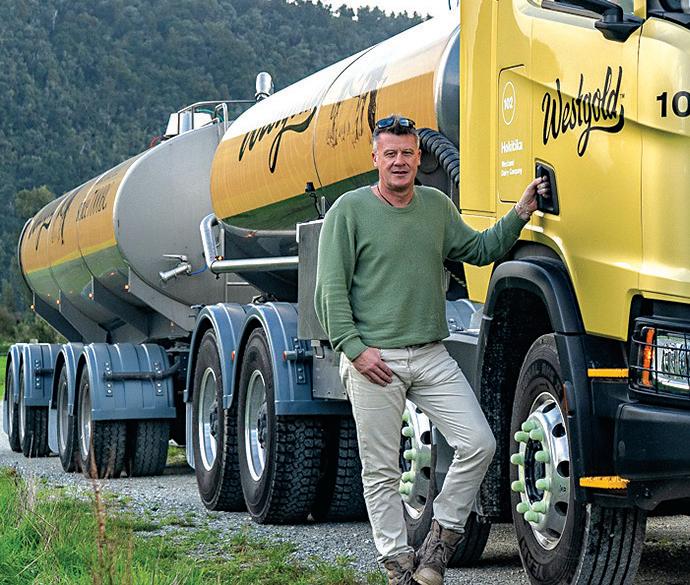
“Although I’m West Coast born and bred, when I started driving the tankers I hadn’t been to Karamea. Now I have been all over the Coast and each day or night’s drive is different,” he says.
“I hope to have another 10 years driving in me, I love the work and the company I work for. I would never be able to match a job like this anywhere else. You can’t beat it,” he says.
Rick’s favourite drive is along the Coast Road be-

tween Greymouth and Westport, particularly the return trip at dusk, when he sees some amazing sunsets over the Tasman Sea. As a driver, he values his relationship with the farm-
er suppliers he meets on his daily trips.
Rick drives one of the seven new Scania trucks with the distinctive advertising message, ‘Plant-based since 7000BC.’ Recognising that
the source of all milk is, and has always been, plants. They are part of Westland Milk Products 28-strong fleet which collects milk from around 400 suppliers, from Karamea in the north, to south of Fox Glacier, and east to supplier farms in Canterbury.
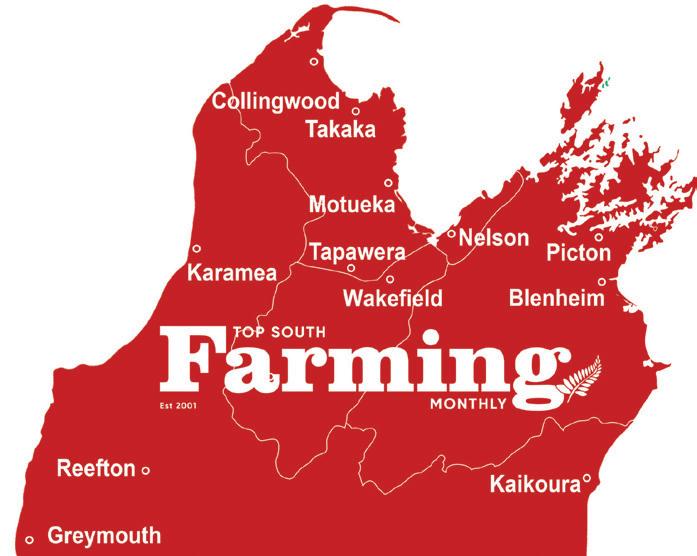
Each truck carries loads ranging from 29,000 litres of milk up to 39,000 litres for the bigger units.
“As a company we are very proud that our award-winning dairy products come from the milk of grass-fed cows. We want people to make the link from our tanker signage that the pastures they drive past around the region are the source of Westgold’s butter,” says Hamish Yates, Westgold’s general manager of sales and marketing.
Caltex Wakefield
Farmlands Richmond
Farmlands Motueka
PGG Wrightson Murchison
Brightwater NPD
BMTT
Tractor Repairs & Spares Richmond
Harcourts Richmond
Bayleys Wakefield
Tasman Honda
MS Ford
Top South Media
Farmlands Hokitika
Farmlands Greymouth
Tasman AG Ikamatua
Farmlands Westport
Karamea Visitor’s Centre
PGG Greymouth
Buller Vets
Farmlands Blenheim
Seddon Supermarket
Renwick Supervalue
Tractor Repairs & Spares Renwick
Farmlands Kaikoura
PGG Kaikoura
Rai Valley Brick
4 Square Havelock
TSM Marlborough
AVERAGE READERSHIP 34,800 Farming TOP SOUTH MONTHLY Delivered to all rural homes from Greymouth to Golden Bay and Kaikōura to Marlborough Sounds. We’ve got you covered. CIRCULATION
Danielle Brown
WEST COAST
14,500
0221605094 danielle@topsouthmedia.co.nz
Oven
TASMAN MARLBOROUGH FIND YOUR FREE COPY Contact Danielle for all your advertising enquiries 26 August 2023 West Coast Farming TOP SOUTH MONTHLY
Rick Bryan has driven tankers for Westland for the past 28 years. Photo: Supplied.
WEST COAST
Cows milking fame on Instagram
ELOISE MARTYN
As a 26-year-old full time dairy farmer, Chloe Payne has also become a worldwide dairy farming celebrity.
Seven years ago Chloe shared her passion, and talent, of cow photography on Instagram (a free photo and video sharing app) and now she, and ‘the girls’, have 165,000 followers around the globe.
Instagram allows people to upload photos or videos and share them with their followers or with a select group of friends. They can also view, comment and like posts shared by their friends on Instagram. The difference between Facebook and Instagram is that Instagram only enables posting photos and videos. Facebook allows you to post photos and videos as well other types of media, such as articles, quizzes, website links, and long videos.
“I’ve always loved cows. When I was little I found calving so exciting and always had my favourite cows,” Chloe laughs.
“Ever since I have been old
enough to have a phone, I have been taking pics of cows. I have thousands on my phone and one day I thought if people can have an account for their dog surely I could have one for the cows? So I did it and it grew so fast I never thought it would be so big.”
Chloe says people are genuinely interested in dairy farming and the cows. One of her driving factors is to keep uploading photos and videos to show how positive the New Zealand dairy industry is.
“I have a real mix of followers, however the majority are in America and quite a few are kiwi dairy farmers,” says Chloe. “Some people say that you can’t love cows and be a farmer. I just want to show that you can do both and that many farmers here do.”
In June Chloe took a role as a herd manager at a farm located at Ikamatua on the West Coast.

“My past role dairying on a farm in Karamea was pretty isolating and after four years I was ready for a change, so I’m pleased to be here. I’ve already joined the young farmer group which is something
I couldn’t do in Karamea due to location,” explains Chloe. However, Chloe is not the only new one to the farm. The farm has all new staff, and new owners who brought with them their herd from the North Island.
“The herd was previously milked via rotary so the cows are still adjusting to going through a herringbone shed. This season will be a hard one for us all, no one knows the farm and the cows
don’t know the shed. This time next year we will be ticking along nicely though.”
The new employers are familiar with Chloe’s cows of New Zealand Instagram account and have followed her for years. They were also accepting of Chloe bringing her own 16 cows with her including her 9-year-old retired dairy cow superstar called ‘Brown Sugar’.

“All cows have individual per-
sonalities and I try to show that through my photography. People are amazed to learn that once a cow trusts you, they enjoy affection as much as a cat or dog,” Chole says.
“There is a fine line between what I post and what I don’t. I do like to educate people on the dairy industry and the long hours we all put in. I’m also realistic, we can’t retire them all, but what we can do is give them the best life possible and I like to show people how happy the cows really are,” says Chloe.
“The insta account has been a huge learning experience. I call myself a full-time dairy farmer, part time cow photographer,” laughs Chloe “Surprisingly it’s been a good way to connect with other dairy farmers around the country. My key focus is not myself or the farm, I just show how happy the cows are and that it’s not for the camera, this is real-life dairy farming being done all over the country. Most farmers are like me and really love their cows and that’s an important message to get out.”
Farmers reflections on life’s milestones

BARBARA STUART
Gary Donaldson is the third generation of his family living in the Westport area. For the past twenty-five years he and wife Joy have farmed 400 dairy-beef at Fairdown, 10K north of Westport. Every year they raised 225 bobby calves and sold off 225 prime or store cattle. Together for over 50 years the couple retired recently and now lease their land. Gary reflects on their life together, the milestones of land purchased and what’s happening in today’s world.
As a boy his parents separated and he shifted to the Tokoroa in the North Island, where he met Joy, the girl of his dreams, at the local High School. He told Joy his father had a ranch at his hometown of Westport.

Eventually he persuaded Joy to follow him back to Westport, they married and set about a joint goal of farm ownership together.
During the 80’s, with a family and life on the coast going through a tough time, Gary and Joy took off to Australia. Gary found work driving a concrete truck near Brisbane, while Joy found lucrative work at Television Australia Satellite Systems.

The pair paid off the mortgage on their house and returned to Westport where they purchased their first block of land slowly adding to it over time.
Garry Donaldson
“It was actually only six acres,” he laughs.
“You could purchase land for $2000 an acre but those days are gone. Current land values are more like $20,000 an acre, there’s no way the next generation can afford to buy land the way we did,” says Gary. He has deep concerns about the cost of living because basics like milk and cheese are costing more
to produce and so many farms across the Top of the South have now converted to either grapes or hops which is not real food.
“It’s messy,” he says, “Government has ignored the rural voice, systems are not lining up with introduced policy, simple things
like the ferries breaking down affecting stock transit between the two islands because of lack of maintenance. Trucks arriving at the ferries to find its not running and the consequences of stock returning to farms when there’s no feed left for them.”
Gary and Joy intend to travel and enjoy their retirement. They have a ‘right to walk’ agreement in the lease, this means they still feel part of the land.
“We don’t bother the lessee, but take a kindly interest and still feel it is ours.”
Suppliers of all grades of industrial and household coal • West Coast sub-bituminous coal with low ash, low sulphur and clean burning qualities • High grade West Coast bituminous low ash coal • Premium grades available for your boiler or multi fuel burner • Bagged coal from 20kg to 1 tonne • Bulk deliveries • Coal storage in the Canterbury region for continuity of supply Give Mark a call on 027 531 0998 for a competitive price to have your coal delivered direct from our mines to your place. Phone 0800 110 602 Email mark@birchfieldcoal.co.nz www.birchfieldcoal.co.nz West Coast Farming TOP SOUTH MONTHLY August 2023 27
Chloe Payne with Popcorn, one of her Instagram superstar dairy cows. Photo: Supplied.
TASMAN

Brightwater Sale Update

Sheep:
Small yarding this week, the dropping schedules made for a hard-fought day in the sheep department.
Prime lambs ranged from $125-166 Store lambs from $60-115
Cattle:
With cattle being very sought after in the Tasman region at the moment we had a small line-up of quality cattle which sold well.

R2 Angus steers ranged from $1000-1100 Heifers around $900
Good line up of R1 Hereford Freisen cattle from Canterbury. We haven’t seen these 250kg+ R1 dairy beef animals at the yards this year which was appreciated by buyers. The steers ranged from $880-900, heifers just behind at $790-840
For more sale information contact PGG Wrightson Livestock rep Jack Cartridge 027 284 9499
More than just honey makers
ELOISE MARTYN
Some orchardists in Tasman and Marlborough are becoming increasingly worried about the fate of their crops and livelihoods due to devastating Varroa bee mortality. Bees are critical to orchardists to pollinate their fruit trees and Varroa mites are one of the major pests of honeybees. Varroa can seriously undermine bees by feeding on their body tissues and increasing transmission of bee viruses. Although they are always present, Varroa levels can increase in a hive very quickly and cause death to the whole colony.
Varroa is a nationwide problem and last summer was the most challenging for beekeepers to combat the pest in the Tasman-Marlborough regions.
Nick Milne, a long-time beekeeper and advocate for the bee sector, says: “Last year’s summer (2002) Marlborough was badly affected and the impact to him wasn’t too concerning. However, this summer just gone, it’s been a completely different story.”
He says beekeepers’ transport hives of bees to particular locations on local orchards. These bees are only there for a short time, but they have a vital job of pollinating the fruit trees while there.
“Their contribution to fruit tree pollination is so significant that some orchardists are becoming increasingly worried about the fate of their crops, and income, when hearing of the devastating reports of the huge bee mortality resulting from Varroa,” says Nick.
“With bees, it’s not all about the honey. Bees play an important role pollinating local orchards and that is often a significant part of a beekeepers’ income,” says Nick.
The Chatham Islands is the only significant bee population in New Zea-
land that remains free of this mite. To treat Varroa beekeepers generally place special strips containing Varroa treatment into hives twice a year. As bees walk on the strip’s surface, they pick up molecules of the active ingredient and distribute them throughout the colony. The treatment is proven safe to the bees and the honey.
“This year we have been having to use additional products, on top of the strips, to control the Varroa, which is an additional cost,” says Nick. He says additional costs are not welcome with falling international demand, slipping export prices and hot honey sale spots like Queenstown still not at pre-Covid levels for tourism, seriously impacting the sector.
“There’s a lot going on in the space,” Nick explains, “increasing costs, low demand resulting in market
are predominantly Queen Bee breeders but also have operations with hives dedicated to pollinating orchards, honey production and they also offer rural and residential customers the chance to rent their own bees hassle-free via another of their businesses, Backyard Bees.
“We both love bees; they are super cool to work with and they are incredibly amazing creatures,” adds Erin.
“The industry is pretty smashed, but it has promise,” sighs Nick “We are still in a good position as we have a trusted country brand and a clean reputation. What us beekeepers’ really need is support and understanding of what’s going on in the industry so we can get back to what we do well, which is manage our hives, pollinating quality fruit and producing healthy honey.”
over-supply and ongoing Varroa mite infestations are making things challenging. A lack of government support and a worldwide recession is also ramping up the pressure.
“In some cases, beekeepers that we deal with have seen their wholesale honey price collapse to less than a third of what it was four years ago - that’s if they can even sell it. High-end Manuka honey has been the worst affected in terms of price and demand dropping.”
Nick, and partner Erin Dunlop, have been beekeeping for 25 years.
Nick’s father and grandfather were also beekeepers and Nick has spent time beekeeping in Canada, the lower North Island, Rangiora and for the past 12 years the Nelson and Tasman region. Their bees are more than just honey makers, they



He says the Government could support the industry by reviewing the labelling and testing requirements around Manuka honey to place New Zealand and Australia on an even playing field; as well as subsidising the cost of Varroa treatments.
“Cost is a big factor in treating Varroa. One beekeeper can be spending extra money and doing everything right to control it, but if their neighbours have a problem and aren’t treating it, the problem spreads and increases. If Varroa products were subsidised it would certainly help everyone,” says Erin.
“The only positive to come out of the state the industry is in, is that people are connecting and talking more,” explains Nick.
“Everyone in the primary industries is struggling, which is not good, but it has made people open up and talk about the challenges. If we could all get some support while supply and demand level out it would certainly improve some of the current challenges for all in the industry”.
pplleton Z Farm r over 5 Appleton’s has been a member of NZ Farm Forest A ociation for over 50 year Regeneration of native bush, erosion control, carbon credits and forestry. www.appletons.co.nz
for2024 28 August 2023 Tasman Farming TOP SOUTH MONTHLY
Ordernow
Nick Milne a long-time beekeeper and advocate for the bee sector. Photo: Supplied.
Nelson Federated Farmers August Update


It’s been a busy time with the executive team, Stephen Todd- President, Kerry Irvine- Meat and Wool Chair, Brian Dineen -Dairy Chair and Brendan LochheadDairy Share Milker Chair, heading to Wellington to attend the annually held twoday Summit.
It’s a juggling act for any farmer to take a few days off farm, and an even bigger commitment when you have a young family, however the four juggled it all and attend.
The Summit is an important event which brings together all the sectors and provides a platform to plan for the challenges and opportunities coming up. Attendees came from all sectors including food and fibre producers, government, science and business.
The event also coincides with the prestigious Primary Industries New Zealand Awards (PINZ), which celebrates excellence across the sectors and supports sustainable growth of our primary industries in Aotearoa.
The awards objectives are to increase awareness of the important role that the primary sector plays in the economy, identify and reward the most successful and innovative primary sector operators, as well as promote NZ’s primary sector role models, to stimulate greater involvement and interest in the primary sector from graduates, investors, politicians and the media.
The awards are open to individuals, teams and companies from any producer groups working within the primary sector or in support of the primary sector.
This year marked the was the fifth annual PINZ Summit, with winners from 65 nominations across nine award categories announced.
Provincial President Stephen Todd reported that PINZ was a brilliant event, with a broad range of interesting and informative speakers including key policy makers, local primary sector leaders, researchers and farming experts and even a few international speakers.
He also reported that he found it really valuable to hear from specialists such as the Rabobank economist who explained that the primary industries has a bright future ahead.
Sure, the short to medium term is looking bumpy and uncomfortable, the next 12 months will be challenging and painful with high input costs and interest rates but beyond that 12 month mark it looks bright again and it’s important to be aware of this long-term forecast indicating a bit of light at the end of the tunnel.

Recently appointed Dairy Share Milker Chair Brendan Lochhead from Murchison, reported on the event stating how impressed he was and how he found the event very insightful as to what is going on for farmers locally and globally.

He also mentioned that the national team had made changes to their communications procedures and that more relatable messaging will be coming, which will bring attention to the mind-blowing amount of work the organisation does.
A highlight for Brendan was the opportunity to discuss issues with farmers in different sectors and how conversations with them gave further insight to the current challenges the dairy sector is working through.
It also underlined the fact that industry problems are shared and reiterated the importance of all sectors sticking together.
Recently Federated Farmers have had some wins in the policy space regarding lowslope map for stock exclusion, with the Government proposing solutions to some key farmer concerns.
It’s positive that the Gov-
ernment is looking to make changes, however Federated Farmers know that farmer feedback is vital to understand how the proposed options would impact on farm so are busily engaging and gathering feedback to help get realistic information to Government so that the right changes can be made.

Federated Farmers are working in this space with Deer Industry New Zealand and Beef and Lamb New Zealand.

It’s the members of Federated Farmers that enable the organisation to continue undertaking a massive amount of national and local policy work. However, the truth is that all farmers and growers benefit from the work they do, and the organisation should be supported more.
If you, or someone you know, would like to be involved with the local group or you want to understand the benefits of being a member - such as free legal advice and free specialised staff contracts specific to your sector, then please get in touch we would love you to be involved and to support the future of our primary industries.
Contact Harry, he covers the top of the South and is realistic in his way of thinking and operating
Harry Matthews 027 507 8901 hmatthews@fedfarm.org.nz
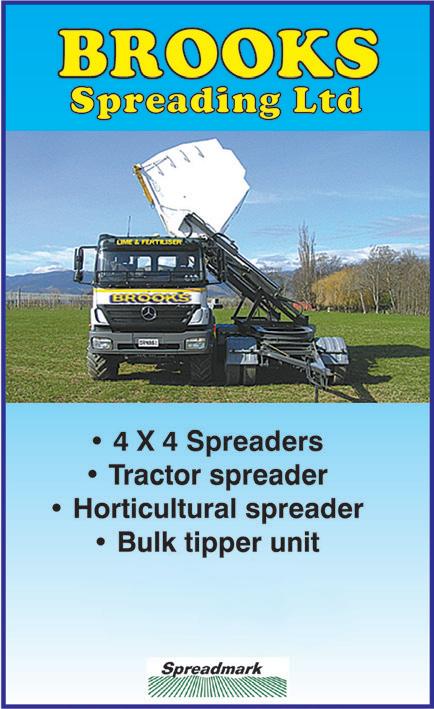
Celebrating life your way Choose how you remember the life of your loved one by working with our friendly and experienced team. We are available 24 hours PH 544 4400 24 Champion Rd, Richmond wrfs.co.nz Conservation solutions that work for your property, business, farms or community projects. www.madconservation.co.nz E: info@madconservaion.co.nz www.facebook.com/madconservation 027 5345 918 • Predator Control • Pest Animal Control • Environmental Weed Control • Wilding Pines • Restoration Planting & Maintenance • Wasp Control • Grounds Maintenance 0800 542 383 Dean 027 431 4090 Ben 027 571 6003 Tasman Farming TOP SOUTH MONTHLY August 2023 29 TASMAN
Got something to buy, sell or promote? Contact us: sales@nmf.co.nz Farming TOP SOUTH MONTHLY
Harry Matthews, Top of the South on road Federated Farmers Rep.
marlborough

Marlborough A&P Show aims for a special 150th celebration
Planning for this year’s annual Marlborough Agricultural and Pastoral Show, currently underway, is aiming for a special celebration this year to mark the 150th show.
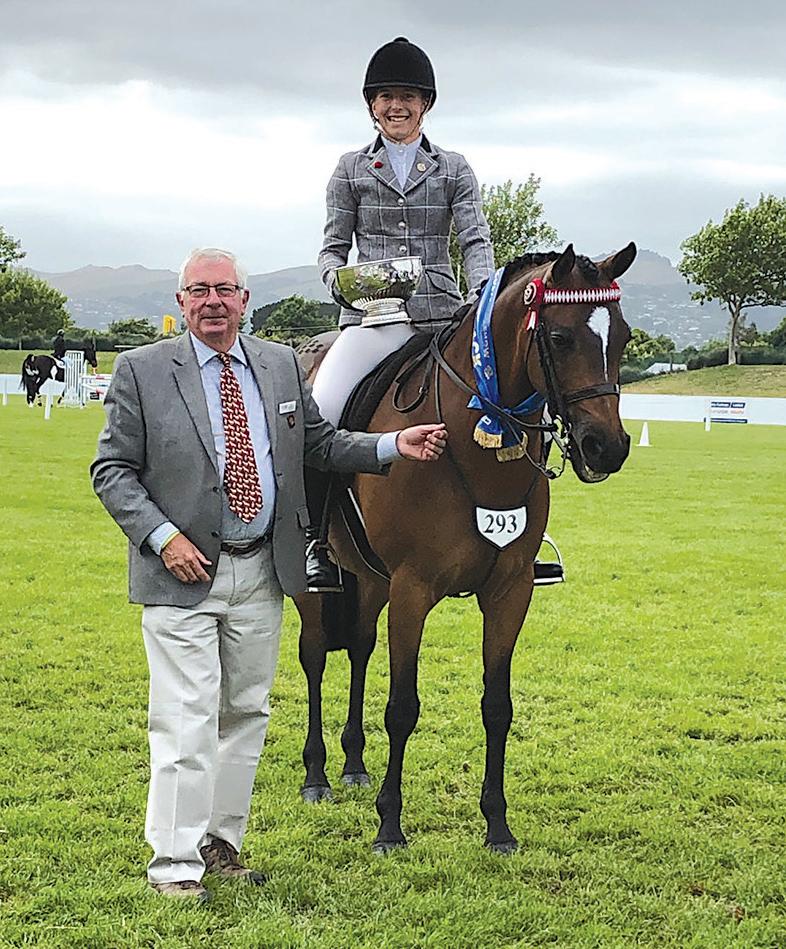
Sam Rutherford president of the Marlborough A and P Association says the special birthday will be enhanced by the event not coinciding with other local events.
“This year the show won’t clash with Garden Marlborough for the first time, as there is an extra weekend in November prior to the Canterbury A and P Show two weeks later. Normally we are the week before Christchurch,” he says. The Equestrian section has been granted a Royal Event status by the Royal A and P Society of New Zealand which means that champion and supreme champions will receive RAS medals and red, white & blue ribbons.
“We are hoping to have a 150th anniversary ball prior to the show and will be encouraging people to dress in
period costume. It promises to be a load of fun,” says Sam Rutherford.
Also on the list of probabilities are a display showing the change in land use over the last 150 years and comprehensive display of vintage machinery.
Sam Rutherford says the 150 years of A and P Shows reflects the role of the annual event.
“For a century and a half, we have been at the heart of our community, promoting agriculture, fostering innovation, and nurturing a deep sense of camaraderie i.e. rural to urban communities.”
Immediate past president Marlborough A and P Association William Harris is equally enthusiastic about this year’s special event saying the association has always been a place where friendships are forged, knowledge is shared, and innovation thrives.
“From the bustling showgrounds to the lively competitions, we have created a vibrant community that embodies the true spirit of Marl-
borough’s rural life,” he says. The diversity of attractions will include wood chopping competition, sheep and pet sheep classes, dog trials, cattle breeds, sheep shearing, the equestrian Royal Event, creative displays of baking, photography, knitting, felting, weaving and the children’s section.
A popular event is Harcourts Future Farmer competition which is always a hit with the children along with foods stalls, arcade rides and visiting the animal nursery on site. William Harris says this year is very special, a celebration of the Marlborough A and P Shows’ 150 years of fostering agricultural excellence and to a positive future.
The 150th Marlborough A and P Show will start with the Equestrian Royal Event On Friday 3 November, running through Saturday 4th and Sunday 5th. All other sections will be Saturday 4th and Sunday 5th November. Make it a date in your diary.
New to Blenheim and opening 7th August
Locally owned and operated, Dwayne and Linda Cosgrove, owners of Opel Industries Ltd – Tradezone Nelson, and the soon to be opened Tradezone Blenheim, have long held a passion for providing a topquality service and providing the best tools, components, consumables and knowledge to their customers. Bringing their wealth of knowledge to the industry, the couple purchased Opel Industries Ltd in 2018 and Linda says they are passionate about their roles on a daily basis.
“Selling tools and machinery, our team, and the relationships we build with our customers, suppliers, and the local community that we support is hugely important to us and always remains a top priority.”

Being part of TradeZone New Zealand, the team are able to source the best products from the best suppliers around the globe. “We only stock top quality products from the best brands, we stand by our prod-

ucts and our staff specialise in what we do; our team can be relied on to source those difficult-to-find one-off items. We are also strongly committed to staying at the forefront of technology, delivering the latest in quality equipment and advice.” Winning multiple awards throughout their journey, opening their newest store TradeZone Blenheim in August is high on Dwayne and Linda’s list of personal highlights. “With the addition of our new store in Blenheim on August 7, this will give us more of a range across both of the stores. We will
have a bigger and better offering, giving our customers more options. The dream was always to operate our own TradeZone store, in Blenheim, but the timing was not right. Now after having been in Nelson for five years, the time IS right and we are ready to open our second store!”
“Success has not come easy it has taken much dedication and hard work. We owe a huge thanks to our suppliers, our customers, TradeZone NZ, the support from the other TradeZone Stores, and family and friends.”
Business Update. Advt. 50 Grove Road, Mayfield, Blenheim 03 577 2040 info@tzb.co.nz 30 August 2023 Marlborough Farming TOP SOUTH MONTHLY
TONY ORMAN
Sam Rutherford with a young equestrian competitor at an A and P Show. “This year promises to be a load of fun.”
Photo: Supplied.
Future of rural mail deliveries are in the balance
A question mark is looming over the future of rural mail deliveries, as renegotiations are overdue for the Deed of Understanding between the Government and NZ Post.
The potential threat of reducing the frequency of rural mail deliveries arose at the monthly meeting of Marlborough Federated Farmers when a letter from a Waihopai Valley resident was tabled warning of the likelihood of rural mail delivery reductions.
Waihopai valley high country farmer David Evans said it was difficult to understand why a reduction in delivery would even be considered.
“With on-line shopping, freight and parcel deliveries, the need for a regular, efficient rural delivery service is vital,” he said.
The Deed of Understanding between the Government and NZ Post is up for renegotiation. It was due to be reviewed in 2022 but New Zealand’s “hangover” with Covid-19 meant it was put off until 2024. Options for NZ Post and the Government are the status quo, cut to four mail delivery days per week or cut to three days, as in urban areas.
But rural mail contractors and rural people are fearing the worst, as in 2017 the new Labour coalition government slashed the majority of urban areas mail deliveries to three days per week after a comprehensive review.
At the meeting a report by rural mail contractor Mike Nesbit was read where he outlined rural delivery contractors do not only deliver mail, but essential goods too.
“They are a vital source of goods delivery to the rural communities, groceries, alcohol, parts, medicines, vet supplies, newspapers, transport for people and animals and rural deliveries are a vital contact for isolated rural people,” he said. In addition, a rural mail contractor keeps an eye out for the health and well-being of farmers as well as potential criminals.
Helping People
“Personally, I check on three of my clients every couple of days. Noticing things like mail building up in the letterbox. I have been involved with accidents, police callouts and, sad to say, some suicide attempts,” he said.
“One involved sitting with a person for three hours, talking to him and getting him the help he needed.”
Rural Women NZ took up the challenge
Tributes flow for much respected farming leader
TONY ORMAN
last time around and were instrumental in keeping Rural Delivery at five or six days a week.
Mike Nesbit said while mail volumes have decreased there has been a massive increase in the freight volumes rural mail contractors deliver. He conceded it is arguable for some of urban fringe areas to be dropped or have services lessened.
“But true rural New Zealand needs, deserves and must have an adequate service,” he said.
David Evans said the uncertainty has the potential to become an election issue.
At the Marlborough Federated Farmers meeting one delegate said the basic cause of the problem was the State-Owned Enterprise model where SOEs were required to show a profit.
“So profits and cost cutting have higher priority over service to the community, which is wrong for an essential service, like rural delivery, so vital to people,” he said.
Freshwater Farm Plans
Marlborough District Council ’s environmental officers outlined measures farmers need to comply with following the Government’s new legislation.

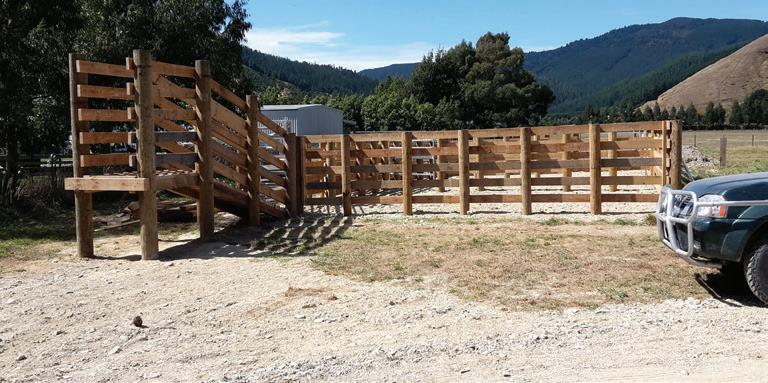
Environmental officer Nic Dann explained the requirement for farmers to produce a freshwater farm plan which farmers will be required to produce by December 2025 and then engage with a consultant for certification within 12 months.
“The freshwater farm plans don’t have to be too onerous,” she explained. “Most will have largely complied already. Indeed, a farmer may be able to do the plan without help.”
Scott Adams said a factor that should be considered in the time frame is the current economic climate with high inflation and incomes down.
“It all adds up to a number of farmers being in survival mode,” he said.
Rapaura farmer Ali Campbell said that by and large farmers are environmentally conscious, taking a keen interest in wildlife and natural habitat.
Old Man’s Beard
Efforts to counter the growth of Old Man’sBeard are a losing battle according to the Marlborough District Council.
Asked about council measures to counter the widespread growth of Old Man’s Beard, environmental manager Alan Johnson acknowledged that measures to counter the growth of Old Man’s Beard are a losing battle.
Tributes have flowed for a much-respected Marlborough farming leader David Dillon, who passed away in early July.
The funeral for the life member and former president of Marlborough Federated Farmers was held on the Dillon family farm, ‘The Throne,’ in the lower Waihopai Valley, and was attended by almost 300 guests.
Meanwhile, from around the region, tributes flowed. Former Marlborough Federated Farmers president Geoff Evans said David was very highly respected as a person and a farming advocate.

“David was one of the finest men you could meet,” he said. “He was a successful farmer, very environmentally aware and a strong advocate for planting trees. His passing is a sad loss to both farming and the community.”
Glenda Robb, secretary of Marlborough Federated Farmers, said Marlborough’s rural community would be saddened by the passing of David.
“A dedicated Federated Farmers member and vocal advocate for the rural community, David was involved in so many things, such as farm forestry, the inaugural Marlborough Environment
Awards, helping coordinate help for the fire-stricken farmers from the Wither Hills and beyond to the Awatere in 2000, irrigation and farm tours. He was a great farmer and had moved with the times into viticulture as well,” she said. Chris Dawkins, whose family farm is near to ‘The Throne’ described David as a wonderful neighbour, with a great record of public service such as via Federated Farmers, the Marlborough Treegrowers Association and the Avon-Waihopai Residents Association.
David’s passion for trees is most evident on ‘The Throne’ with plantings
spread over 50 years.
“A very keen and competent stockman, he travelled extensively, even overseas, to further his farming knowledge,” said Chris Dawkins. Rapaura farmer Ali Campbell was also warm in his praise. “I have a tremendous respect for David as a man, a gentleman and farmer.”
David was elected Marlborough Federated Farmers president in May 2000 and continued until 2004. He was a trustee for the Marlborough Environment Awards. He was also a strong farming voice on the Marlborough District Council landscape committee and other organisations.
027 260 7815 GC.LTD@xtra.co.nz Fencing & Vineyard Specialist Farm | Residential | Lifestyle Fencing Vineyard Posting | Strainers | Stays Wire Running | Security Fencing GRAEME GRAEME C OLEMAN F ENCING M A R L B O R O U G H Servicing MARLBOROUGH, BLENHEIM, PICTON, WAIRAU, AWATERE Marlborough Farming TOP SOUTH MONTHLY August 2023 31
marlborough
TONY ORMAN
Marlborough Federated Farmers
Marlborough farming leader, David Dillon. Photo: Supplied.
STAFF REPORTER
A new entity, Discover Forestry NZ is now underway nationwide. The forestry education operation has been set up by our eight Wood Councils with the aim to provide information and practical resources to young ones, and their families, who are wanting to explore career options in the sector. More than 40,000 New Zealanders work in forestry jobs in New Zealand and Discover Forestry NZ highlights that there’s a great range of jobs available in the sector – including working outdoors, driving machinery or trucks or working in an office or a lab.
Discover Forestry NZ provides things such as local workplace connections with professional foresters and members of the forest sector for young people, information and field trips, school presentations and careers materials. The entity will also act as a platform to bring visibility and edu-
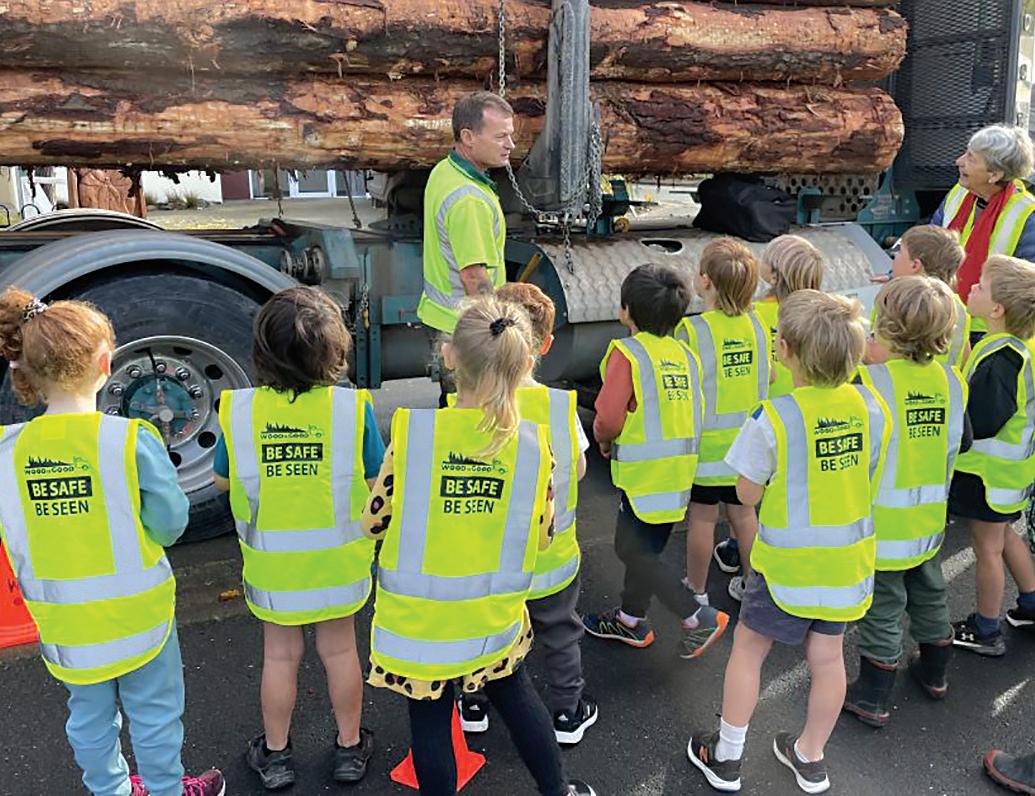



cation to the forestry industry to children via the Wood is Good (primary) and Grow Me (secondary) engagement programmes and resources.
Wāhine in Forestry is another branch of Discover Forestry NZ that has been established. The purpose of this group is to encourage and empower women to succeed in the forestry industry through various initiatives such as workshops with other primary sector women’s groups, skills building with students, and linking woman across the New Zealand forestry sector.
Discover Forestry has been designed to fill a gap where efforts in this space have largely been overlooked, disjointed and across regions and industry organisations, until now, there has been considerable duplication of effort. Its aim is to ensure that any funding secured and efforts in this space can be co- ordinated, and resources can be put to best use.
SPECIALIST FOREST ADVICE • Carbon and Farm Integration • Native and Exotic Management • Harvesting and Marketing • Forest Assessment DISCOVER WHY AT www.ifsgrowth.co.nz 03 928 5755 | consulting@ifsgrowth.co.nz 32 August 2023 Forestry Farming TOP SOUTH MONTHLY
Forestry
for New
kids local forestryupdate
education
Zealand
Kids are taught by professional foresters.
Photo: Supplied.
local forestryupdate
Mouse in the forest
ELOISE MARTYN
stayed on and that was the start.”
“If you had told me, even seven years ago, that I would be working inside Onefortyone I would have laughed and said, ‘I don’t think so, I’m not able to do that job’.” Mouse says.
risks, running through risks regularly and putting practical steps in place to eliminate, or mitigate, those risks. An LPC also monitors the supply of log grades working with crews to meet required grades for customers.
adver tisingpr oof
The opportunity for the position came up while Covid lockdowns were impacting the travel required in Mouses previous job.
Mouse, a nickname that has stuck since primary school, is well known in the Tasman Forest as an experienced bushman as well as a keen pig and deer hunter. Mouse, Matthew McCarthy, has spent decades in various forestry roles such as breaking out, manual felling and trimming. He had 13 years as a waratah operator, four years conducting specialised Waratah audits and quality control education and support to crews in Australia and nationwide in New Zealand.
“My workload had been cut in half due to the lockdowns and when the role came up, I thought ‘I have those skills’ so applied,” says Mouse.
Please check your proof carefully and approve it or submit corrections by the Final Proof Alterations deadline. ve or submit changes to your ad within the ATOL system at a time that suits you. Just follow the link view your ad, then cl ick the APPROVE or CORRECTIONS button right from there - no new emails required!
was learning lots. Thirty months on and he’s still going strong.
However, a few years ago Mouse stepped into a Log Production Coordinators role, otherwise known as a harvesting supervisor, without a backwards glance. “I used to kick around down the sounds and was lucky enough to know someone who had a loader and logging crew,” says Mouse. “I spent school holidays cutting up firewood to get some funds for a dirt bike and realised I liked the work. I was offered a stint breaking out for a hauler crew in Marahau and the work just fitted with me; I liked being outdoors so
Another drawcard was gaining access to a hunting playground, spanning more than 45,000 hectares – which is just over half over of Onefortyone’s estate size.
Mouse uses GIS-based forest mapping and works with road engineers to maintain harvest infrastructure such as roads and forest landings as well as post-harvest engineering after harvest is finished. He is the communication hub regarding product harvest and constantly keeps everyone in the communication loop of what’s happening with harvest. Mouse’s role is split with around 25 per cent of the work being office-based and the rest out on site.
adver tisingpr oof
“I have my challenges, as you do in all jobs. Wet weather is a big one and requires all involved to be more mindful of the environment. We’ve had two wet summers, but the flip side of that is that we have had no fire risk during this time which is great.”
ferent career options and more companies are looking to employ people with hands-on experience to fill roles like his.
Something else Mouse enjoys is interacting with local farmers who have land on the forest’s boundary.
A Log Production Coordinator (LPC) is responsible for all the technical work which precedes a forest harvest. They coordinate the harvesting activities and environmental requirements.
Health and Safety’s a big part of the role and Mouse puts an emphasis on ensuring crews have everything that is required to operate safely – this includes heat maps to identify hazards and
“When I started the job, it was a bit nerve wracking,” Mouse admits, “it’s hard when you push yourself outside your comfort zone. I had in the back of my mind that I could always go back to the bush work if needed.”
Please check your proof carefully and approve it or submit corrections by the Final Proof Alterations deadline. now appro ve or submit changes to your ad within the ATOL system at a time that suits you. Just follow the link proof email to view your ad, then cl ick the APPROVE or CORRECTIONS button right from there - no
However, it wasn’t needed, with his hands-on experience and genuine like for paperwork and numbers after only six months in the job, Mouse had relaxed and
The Professional Forest Management Company of Choice.
The Professional Forest Management Company of choice
He says another challenge is working with crews that need to get their production up; it takes a bit of time and planning, “but we usually get there.”
“I like being outside and interacting with guys,” he says. “I really enjoy being involved in something that’s not working right, problem solving, working it through and seeing the result,” Mouse says.
He says forestry has many dif-
“I like working together with neighbours, they are an important part of our operation,” he says, “I enjoy having a chat and seeing their way of life.” Mouse says that over time he has learnt how important and amazing trees are.
“They clean our water and air, help manage erosion and act as an important buffer against climate change. Our forests sustain many different species of animals and if we look after them, they will look after us.”
PF Olsen is the leading provider of independent professional forestry services in New Zealand. Contact us now for all your forest management needs:
The Professional Forest Management Company of Choice.
PF Olsen is the leading provider of independent professional forestry services in New Zealand. Contact us now for all your forest management needs:
With 25 years experience in the industry the Tasman Forest Management (TFM) team offer services in:


• Forest and woodlot harvesting
• Carbon accounting and advice
• Harvest management and log marketing
PF Olsen is the leading provider of independent professional forestry services in New Zealand. Contact us now for all your forest management needs:

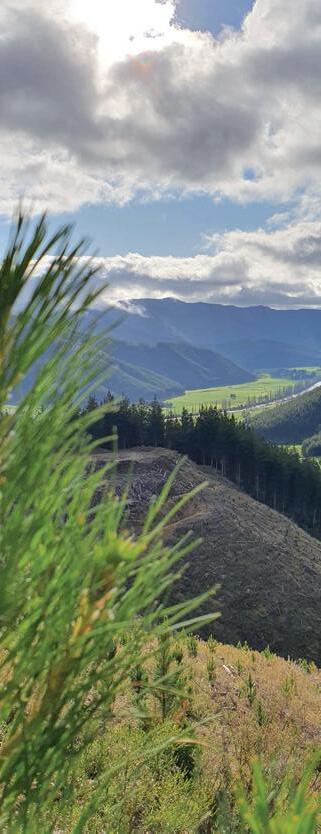

• Harvest management and log marketing
• Domestic and Export Log Purchase
• Forest Establishment
• Forest establishment and tending
• Harvest management and log marketing
• Forest establishment and tending
• Forest valuations
• Forest establishment and tending
• Forest valuations
• Forest valuations
• Emissions Trading Scheme advise and management
• Forest Valuation
• Due diligence on forest purchases/sales
• Due diligence on forest purchases/sales
• Due diligence on forest purchases/sales

• TFM are part of the Forest Management Group with offices throughout the South Island, Hawkes Bay and Southern North Island
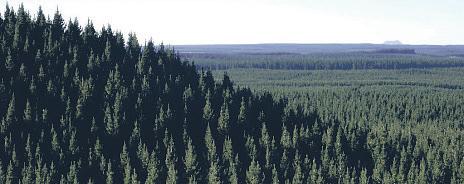
new emails required!
CH-8994297AA Nelson 03 544 0066 Blenheim 03 577 6675 OLSEN & CO LTD (RMD) publishing 06/24/21 booked size CSQ QUART VE CH-8994297AA (100%) publication Adv Supp NEM dimensions 12.3X12.4, cms width by height section CUSTOM SQUARE proofed 9/06/2021 12:22:08 PM
Nelson 03 544 0066 Blenheim 03 577 6675 LTD (RMD) publishing 06/24/21 booked size CSQ QUART VE (100%) publication Adv Supp NEM dimensions 12.3X12.4, cms width by height section CUSTOM SQUARE proofed 9/06/2021 12:22:08 PM
To find out more www.forestmanagement.co.nz office@tasmanforest.co.nz Nelson 03 540 3177 Blenheim 03 572 7902 Forestry Farming TOP SOUTH MONTHLY August 2023 33
Matthew McCarthy, with an impressive office view.
Photo: Eloise Martyn.
Where does nitrogen for pasture come from?

have an abundance of pasture throughout the year the most frequent dismissal is that they are understocked.
amount of dry matter, perhaps the key reason for farms having to increase in size to remain profitable.
of that is necessary for annual pasture production of 18,000kg of dry matter per hectare and above.
There is a surprisingly large group of mostly young farm owners and operators that believe that if nitrogen is not supplied regularly in manufactured form there will be a deficiency which will limit growth.

They site the evidence of not applying nitrogen to one paddock or area of the farm and growth in that area almost immediately slows. It is an accurate observation and reinforces the fact that if anything is removed from an existing programme and not replaced growth will slow, and that applies to all commonly applied nutrients.
There are farmers that have never embraced the philosophy that nitrogen must be applied regularly and when their properties

When stocking rate is measured in animal numbers that will often be the case however if stocking rate is measured in animal weight along with kilograms of milk solids, meat and wool produced, their stock units carried is often well above district average. Where then does the nitrogen required for outstanding production come from? Primarily from two sources, soil microbes that fix nitrogen direct from the atmosphere, however most of it is fixed free of charge by clover. 78% of what we breathe is nitrogen so there is no shortage of this essential gas, it’s how to make it available for plant growth that is the issue.
Permanent grazed pastures were developed in this country with a mix of typically three clovers, two whites and one red, along with
grasses that included rye, cocksfoot and prairie.
A photo of pasture in Grasslands of New Zealand by Sir E. Bruce Levy in 1970, has the following, “good clovers are essential to exploit phosphate, lime, and other mineral fertilisers and to ensure nitrogen-getting for the grasses of the sward.”
Annual pasture production was measured at between 14,000 –15,000lb of dry matter per acre, the equivalent of 15,900kg and 17,000kg dry matter per hectare today.
There are few pastures today that produce anywhere close to that
Functional Fertiliser makes two products, CalciZest based on lime and DoloZest using Golden Bay Dolomite. They both contain a wide range of proprietary fungi and bacteria cultured onto soft carbons.
The use of beneficial microbes is to facilitate the uptake of nutrient by plants as it is only through the activity of biology that nutrient can enter plants. The other important reason for the inclusion of microbes is to speed the rate at which nutrient is cycled i.e. nutrient taken up by roots is replaced. This speed of cycling is particularly important for nitrogen availability. There is typically 5,000 –15,000kg of nitrogen per hectare within reach of plant roots. It has accumulated naturally along with carbon and only a small fraction

Clover growing over the summer and early autumn can fix considerably more nitrogen than required for growth allowing for the further accumulation of soil carbon.

Clover flourishes when it’s too hot for grasses, typically from late November through to midMarch, the reason for clover to be an essential part of pasture mixes. One of the ways to maximise the growth of long stemmed largeleafed clover is by increasing the amount of readily available calcium.
Both CalciZest and DoloZest contribute to the calcium rich environment necessary for strong pest free growth, and for optimum mid-season performance are best applied in spring. For more information call Peter on 0800 843 809.
CORRECT YOUR CALCIUM MAGNESIUM

with Golden Bay Dolomite for a healthier system
Dryland cropping farmer Tom Rudge farms on the fertile mid-Canterbury plains between Rakaia and Methven. There are two predominant soil types on the property, a well-draining deep Templeton silt loam and a Lismore shallow silt loam. Nestled between the foothills of Mount Hutt and the coast, the annual temperature is 9.2 degrees with an annual rainfall of 967mm. The area experiences dramatic extremities with short, cold winters and occasional snowfall, switching to drought-prone conditions in the early summer months.
Tom specialises in an intensive crop rotation that consists of consecutive cereal crops, wheat, and barley, followed by a grass fallow period before returning to the cereal rotation, a cycle that is reliant on high nutrient inputs. Seven years ago, Tom become frustrated with their traditional NPKS approach as they were seeing the same issues paired with underperforming crop yields year-on-year.
Production was suffering in key areas:
growth
The turning point came after Tom attended Neal Kinsey’s introductory soils course, summarising American scientist William Albrecht’s work. This was revolutionary as it not only focused on the volume of different elements present in the soil profile, but the relationship between them. The research resonated with Tom’s willingness to try an alternative soil science, and they haven’t looked back. Over the seven years since switching approaches, they have observed:
1. Seeds establish a strong root system early
2. Seedlings experience less disease/pest pressure



3. Greater resistance to extremities like summer dry or wet downpours

With these results, Tom “wouldn’t hesitate to recommend switching to Golden Bay Dolomite for other farmers to improve their crop health and production. GBD is easy to engage with, and there have been no problems ordering GBD products or delivery timeframes. Incorporating GBD into our cropping program is seamless and it goes on paddocks without any issues.”

Learn how Tom lessened the pests and diseases plaguing his farm.
03 525 9843 | sales@goldenbaydolomite.co.nz | www.goldenbaydolomite.co.nz To find out more about the benefits of balancing your soil elements contact GBD on SCAN HERE GBD Advertorial
Crops were failing to establish quickly with strong
High prevalence of pest and disease burdens Trace element deficiency correction had minimal improvement
34 August 2023 Fertilizer Farming TOP SOUTH MONTHLY
fertilizer
Falling fertilizer prices Elements and animal health
 JOHN BARNES Managing Director Fertilizer New Zealand
JOHN BARNES Managing Director Fertilizer New Zealand
Every plant and every animal are made up of a vast range of elements. They range from the larger elements such as calcium to really small amounts of elements such as selenium and cobalt and everything in between.
This aspect of farming has been well documented and, as often the case, started with farmers ‘experimenting’ and finding what works on their own farm.
One such farmer was Brown Trotter from Fairlie. In his book Soil Minerals – the key to Farming Wealth and Your own Health he talks about pioneering the use of trace minerals in New Zealand farming. As a result, he greatly increased his farm’s profitability, improved the health and breeding of his livestock, and won numerous prizes at Stock Shows.
As I understand it, Brown was farming in the 1950’s and 1960’s. One scientist who was interested in Brown’s work visited him and worked through his practices and found indeed these elements were essential for complete health. Dr Jim Bruce-Smith became convinced that what Brown had found to work on his farm was scientifically proven to be correct. But because it did not fit with the scientific mainstream thinking of the day, was made to feel inferior and ostracized by his peers.
Much of what Dr Jim proved to be scientifically correct in the 1960’s is now mainstream thinking by most forward-thinking scientists.
At Fertilizer New Zealand we have adopted this science into our business. These same trace elements go into our liquid fertiliser Actavize, and we have also made available our trace element mix called Megatonic.


Megatonic has many trace elements in a balanced form so that the animals that consume it will be healthy.
In short, this is how it works. Every minute of every day new cells are being created in their bodies. As these cells are formed, they require a range of small amounts of elements.
So, the body searches for these elements within its body but if
there are none there or it cannot be found in the diet of the animal, then there must be a compromise. What could be found to make up for what it needs to create cells? Either it needs the correct elements, or it uses something that is second-rate. This creates an unease within the body system, and it becomes uneasy with what is happening. When this happens it is, as one Medical Practitioner called it, a Dis-ease because the cells have been created out of the wrong elements. If this continues to happen, a serious situation arises and this leads to a disease.
So, for healthier animals on your farm, give us a call today to talk about Megatonic.
Fertilizer New Zealand - 0800 337 869
ELOISE MARTYN
Fertiliser prices went up an eye watering 25% last year. Now they are starting to come back down. Some products are down as much as $200 per tonne while the majority is down around $100 per tonne, and further reductions over the remainder of 2023 are forecast. However, it’s estimated that demand will take a lot longer to return.
“Last year was the worst year we have experienced in 20 years,” says Dean Brooks of Brooks Spreading in Wakefield. “There are a lot of factors impacting the industry not just price.”

Dean explains other factors that have impacted the industry are the last two very wet winter and spring seasons, higher interest rates and insurances impacting cashflow, the drop in global demand, farmers receiving reduced commodity prices and increased government pressure being pushed on everyone in the agriculture and horticulture sectors.
“Prices are dropping back, which
is great, but it’s more than just pricing. We have clowns in power with a large number of policies putting unnecessary pressure on everyone,” says Dean. “Farmers are struggling with higher input costs and reduced commodity prices. Farmers are price takers not price setters and that’s the hardest part, they can’t put their prices up, so they reduce their outgoings on things such as their fertiliser spend.”
Ravensdown recently reported that fertiliser usage had dropped on average 30% across the globe and that Ravensdown’s sales had dropped plus or minus 20%. Also, Rabobank’s latest semi-annual Fertiliser Outlook Report indicated that while affordability would improve global consumption could take 2-3 years recover.
“With the price coming down and the indication that interest rates will flatten off, things should hopefully settle down,” Dean says. “A change of government would certainly improve things and possibly remove some of the uncertainty out there.”
Fertilizer Farming TOP SOUTH MONTHLY August 2023 35 fertilizer
John Barnes, Managing Director of Fertilizer New Zealand.
Photo: Supplied.
Tail docking: regulations and minimum length
Make sure you are up to date with tailing regulation and minimum length.
Why are tails and tailing important?
It is vital to remember that sheep tails have a variety of important functions - in particular, the base of the tail is an anchor point for some muscles required for def-
ecation. Therefore, tailing must only be performed if it is necessary to maintain good health and welfare. Most often the technique is used to help prevent faecal soiling, dag formation and reduce the risk of flystrike.
The tail should be docked to no shorter than the distal end of the caudal fold. This is where the tail fold meets the wool.
How should tail docking be done?
Current minimum standards include docking tails to a sufficient
Got your calf rearing kit ready?

length to cover the bottom of the vulva in ewe lambs and a similar length in ram lambs. The tail must be docked to no shorter than the distal end of the caudal fold.

It is preferred that lambs are docked between 12 hours and six weeks of birth. If younger than six months only two methods are acceptable.
These are 1. searing irons or 2. rubber rings. If older than six months, it must only be performed by a vet and administered pain relief under
the Code of Welfare.
Remember to minimise the risk of infection by:
• cleaning all pieces of equipment in disinfectant
• aim to keep your hands clean and dry, and try to use a clean area
• avoid docking in wet weather.
What are the consequences of noncompliance?
Penalties to be aware of:
• Inappropriate technique (anything other than a hot iron or
rubber rings) - $500 fine.
• Inappropriate length (shorter than the distal end of caudal fold)
- $500 fine (or $1500 for business) or court proceedings if a serious offence e.g., multiple animals.
• Inappropriate timing (must be done by a vet if over 6 months)
- Criminal conviction and fine up to $3000 or ($15,000 for the business).
If in doubt, contact your vet to discuss options and timing. There are also many handy recourses online at sites like Beef + Lamb NZ and MPI.


The best start comes from Calf Max Calves love the taste, smell and texture of Calf Max. Made in New Zealand with NuStart® Evolution for superior rumen development, it’s always good and always gone. Now in recyclable bags. sealeswinslow.co.nz | 0800 287 325
36 August 2023 Livestock Farming TOP SOUTH MONTHLY
livestock
Focusing on the future
NADINE TURLEY
I was fortunate to attend the Nelson regional final of the Young Grower of the Year last Friday, where Dillion Paterson was announced the winner. I also attended the Ahuwhenua Awards Dinner in early June, where Grace Rehu won the 2023 Ahuwhenua Young Māori Grower award. In between, I have taken part in several grower meetings and at the start of next month, HortNZ – in partnership with several product groups and sponsors –will bring hundreds of growers together through the inaugural, Horticulture Conference Week. Considerable investment across the horticulture industry is made in events and meetings that bring growers together. Sometimes these events serve a particular purpose – for example, finding out more about proposals and gathering feedback on these proposals; or finding out more
about decisions and how they affect growers. Other events are a chance for growers to reflect while at the same time, offering them the opportunity to come together for a good yarn, while celebrating the success of our industry. Growers grow because they are passionate about what they grow. Even though times are tough for many growers, the passion comes through in conversation, and there’s this strong drive to get back out there and grow – particularly if the sun is shining as it was in Gisborne the other week. The strength of this passion cannot be underestimated but also, it cannot be taken advantage of.
Organisations such as HortNZ try and reflect growers’ passion in their advocacy while maintaining dialogue with groups who have not experienced the passion, let alone understand where it comes from.
Sometimes the passion is overwhelming. This puts HortNZ in a
difficult position. Our objective is to achieve as much as we can for growers in environments where many different things are taken into consideration. Call this the art of politics with a small ‘p’, even though it involves interaction with Politics with a big ‘P’.
Last week, I asked growers affected by adverse weather events in the North Island to give the Government some time to work through the detail of the financial instruments that have been announced.
On reflection I was asking growers to cool their passion, as hard as that is for growers as passionate as ours are. I still believe this has been the best course of action to take, as it will enable officials to develop the detail, and not get distracted by the passion. We need to focus on the future but not only the future of our industry. We rely on society’s support to grow. The term we give this is ‘social licence’. Yes, we could take
If at first you don’t succeed
ANDREW RITCHIE
Zac Howell has won the Marlborough Young Viticulturist of the year competition. He was the only returning contestant, having come fourth in his two previous attempts. Zac holds a graduate position at Indevin Group and has had numerous roles within the business, from winemaking to technical viticulture. This year he was involved in the planning and coordination of the machine harvesting. He will go on to represent Marlborough in the NZ Young Viti-
culturist of the year in Hawkes Bay in August, where he will compete against winners from Auckland, Hawkes Bay, North Canterbury and Central Otago. Laura Hammond of Cloudy Bay was second and Liv Bishop from Delegates was third. The competition is open to contestants from the industry who are aged 30 and under. Now in its eighteenth year the contest holds education days followed by regional competition days. Practical and theoretical modules include budgeting, vineyard nutrition, pest and disease indentification,
pruning, trellising, irrigation work and machinery. Apart from the kudos of winning this prestigious competition, the national winner will receive the use of a Hyundai Kona for the year, an Ecotrellis $6,000 travel grant plus $2,000 cash, a leadership week, an AEG power tool package valued at $2,000, support to Young Horticulture for 2024 and an Infaco Electrocomp Secateurs and kit worth $3,000. A regional winner receives $1,000 cash, AEG power tools and up to $1,300 towards travel to the final.
a more militant approach, but HortNZ doesn’t believe that is in the best interests of the whole industry, because that could bring into question our social licence. New Zealanders by and large are very supportive of our country’s horticulture industry. Indeed, they are proud, particularly when they see our produce on shelves overseas. Our industry has so many things going for it, now and in the future, particularly in terms of adaption to climate change and increasing New Zealand’s produc-
tion of low carbon food. We are at a crossroads, thanks to the impact of Covid and ongoing adverse weather events. The Government – and taxpayers – are offering us support, because they do see the value of our industry and the healthy food that we produce. However, the country doesn’t have infinite resources. Every day, there are news reports of a deepening deficit for the country with many other sectors and industries also calling out for Government support.





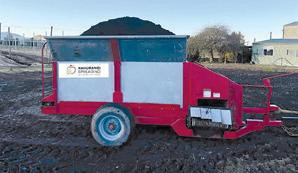


From kitset sheds to the complete build • Vineyard and Hopp Development • Stock Yards • Farm Fencing • Waterway Protection Development • Farm Tracks and Fenceline Development We specialise in the Rural & Lifestyle Sector within the Nelson Tasman region Over 30 years experience Farmline FARM BUILDING & FENCING Farmline40@gmail.com | 027 963 5396 0221 696 558 • AG • HORT • VIT • HOPS All fertiliser types, give Nick a call... SPPREADING Compost Mulch Spreader Now Available! Horticulture Farming TOP SOUTH MONTHLY August 2023 37 horticulture
HortNZ CEO, Nadine Turley presents Dillon Peterson, Nelson Young Grower of the Year with his Award. Photo: Supplied.
How others find driving a Hybrid and Petrol
Country MOTORING

A week ago, I had eight vehicles and 10 staff from Worksafe NZ training on our Off Road Faculty at our Amberley farm. It provided a couple of interesting observation that most motoring Journalists don’t have access.
Firstly ‘real world’ drivers who use their vehicles every day as a work tool.
Secondly as W/S is changing to Toyota RAV 4 Hybrids an opportunity to compare both Hybrid and Petrol options with the same drivers, however seeing how others find and use the vehicles is quiet enlightening.
Too often now companies and organisations give new tools, com-



puters, phones and cars and just expect employees to know how they work and how to use them. The electronic gizmos that now dominate cars are no exception in both types. With the adoption of new technology and government departments forced to buy EV or Hybrid vehicles, though largely unobtrusively are difficult at first and examples such as push button start is however is easily confused with Hill Descent Control which both hide behind the lower right of the steering wheel.
Standard also you’ll find, Radar Cruise Lane Departure Warning Auto Headlights, with auto high beam, Auto Wipers Pre Collision System a radar cruise that keeps you at a safe distance and Blind Spot Monitor.

The obligatory ABS VSC [ESP] EBD is all present as are 11 air-


Looking
bags. Lots of new tech to absorb as well as the Hybrid driving
On the Road

Both RAV4s are well suited to country roads with seal or shingle the electric steering providing feedback, while the AWD holds the given line when the going gets slippery. However it’s driving off road that differentiates Hybrid from Petrol only.

Off the Road
The most glaring change for the Hybrid other than a battery for powering the drive is the lack of a drive shaft to the rear axle. Using that space and that of the under rear seat area still allows the carriage of a full sized spare. That alone is unusual in most Hybrids this means the rears are solely driven by electric motors. Off the
beaten track exposes the weakness this brings, means the front wheels can spin while the computer shuts down power to the rear to protect the electric engine. Unlike the petrol engine there is no 4WD switch which with traction control switched off engages AWD at will. So when some of the trainees tried to start off up a slippery slope the Hybrid spun the front wheels without forward motion while the Petrol [ICE engine] easily drove up albeit with wheel slip from both axles. The other key difference occurred when water crossing was necessary as the Hybrid is not recommended to be above the height of the tyre below the wheel or 200mm. The ICE is capable of 350mm wading
So is the ICE or Hybrids best for
off road use in rural areas? You might not like the answer as its yes and no depending on individual circumstances.
Economy favours the Hybrid which while hampered off road are very capable on most tracked or sealed surfaces. The W/S team generally liked the new RAV4 Hybrid. Lamenting the loss of other vehicles such as the Toyota Hi Lux and RAV 4 petrol and Hyundai Tucson they currently drive, realized that with careful driving the Hybrid can perform most duties as well as moving in the direction the government has signalled. The ICE manages all conditions as well or better than most mid sized SUVs with the added advantage of less weight from the battery. It also tows more and a lower initial purchase price.
AVAILABLE NOW Give us a call on 03 577 9238 to find out more.
for
We have long and short term storage available for household item, boats, caravans, and trailers. Marlborough based. The SIS Ball Cock Valve TARANAKI ENGINEERING SOLVING A NATION-WIDE FRUSTRATION WITH LEAKING BALLCOCKS So simple it could be serviced by your bank manager! Designed and manufactured in New Zealand We offer a lifetime warranty on the CNC machined main body 0800 175 720 www.sisballcock.co.nz 38 August 2023 Motoring Farming TOP SOUTH MONTHLY motoring Got something to buy, sell or promote? Contact us: sales@nmf.co.nz Farming TOP SOUTH MONTHLY
storage?
The drone captures Work safe’s vehicles including Toyota petrol and Hybrid RAV4’s Toyota Hilux Mazda BT 50 Hyundai Tucson and Mitsubishi Outlander. Photo: Supplied.
with Ken Strungnell
Rural Community Noticeboard
www.tasmanhonda




The Rural Noticeboard is for local not-for-profit community groups and organisations to advertise community events or projects that will be of interest to our 35,000 rural readers over the top of the south. Thanks to the team at Tasman Honda for making this noticeboard possible. If you have an up-and-coming project or event that you wish to place on this noticeboard, please contact eloise@topsouthmedia.co.nz
Tākaka Library: Wordfest Author Talk Gerard Hindmarsh
Tākaka Memorial Library
Wednesday 30 August 2023












1:00pm – 2:00pm

Well-known local author Gerard Hindmarsh talks and presents a slide show about his latest book “Kahurangi Out West”.
This book is the final in his trilogy of stories from the backcountry of Northwest Nelson. Subjects start with the Anaweka waka, and finish with the family stories of the graziers who live along Kahurangi’s wild western flank today. They also include stories of drovers, loggers, mill workers, top secret coast watchers, linesmen, King Tom of the Matakitaki, and the joy of traversing the formidable Dragon’s Teeth of the Douglas Range. Shining through will be Gerard’s love of the area and nose for a good story.
Free to attend.

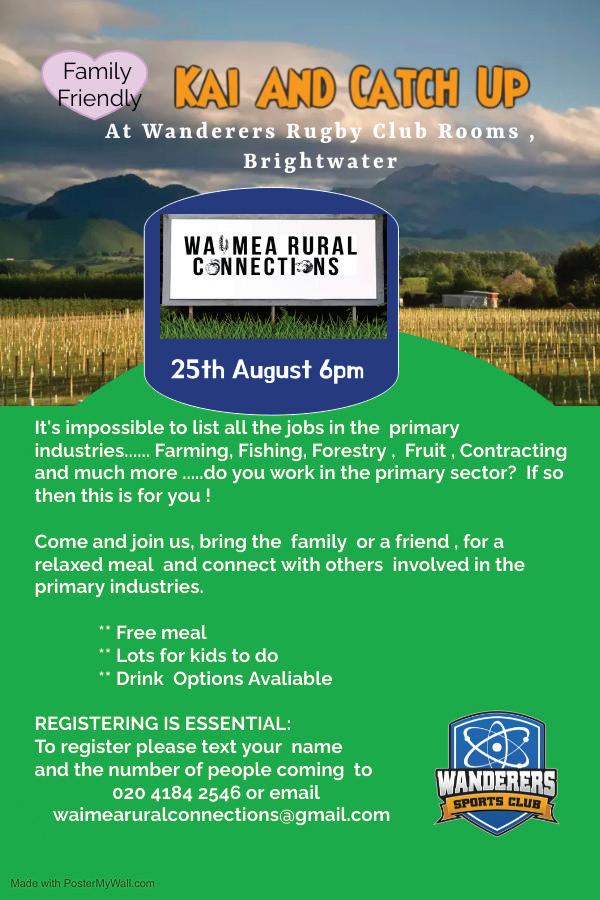

MORE POWER. MORE CONVENIENCE.

A BIKE FOR EVERY FARM

WB20 WATER PUMP PORTABLE POWERFUL PERFORMANCE
ENGINEERING
Life EU32i
Noticeboard Farming TOP SOUTH MONTHLY August 2023 39
FOR
.co.nz









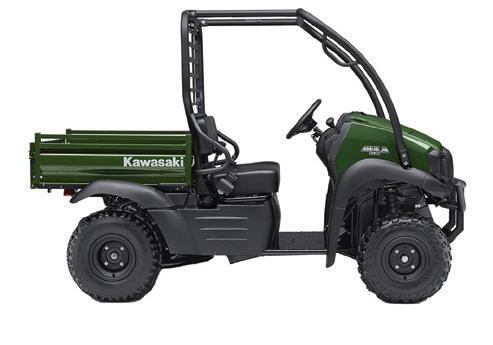





$15,086 excl Kodiak 450 Power steering, 4WD Specialised farm bike $4,434 excl If you need to upgrade your Yamaha workhorse it is vital you back order now. FILCO CALL US NOW! 03 547 2420 Powerful 850cc, 4WD, larger tip deck, high profile suspension. Wolverine X2 Ute $17,477 excl Kodiak 700 Power steering, 4WD $13,912 excl Kodiak 450 Non power steering (blue) KVF 300 2WD, 4 Wheeler solid performer on flats and roaded hills. GREAT PRICE AT $7,822 +gst RELIABLE AND TOUGH MULE PRO MX $23,039 $6,604 excl FILCO SOLUTIONS Kawasaki Mule SX 2x4 $15,213 excl KAF M ule Bigfoot 4x4 $17,822 excl FARM & SPORT ANNESBROOK NELSON www.filco.co.nz Rod Payne & Dave Filer A fond farewell to this top farm bike, limited stock so be quick. Once they’re gone, no more! KL250 STOCKMAN 0% DEPOSIT - 0 REPAYMENTS FOR 12 MONTHS All at a competitive 6.9% fixed rate! Filco Yamaha make it easy to upgrade your farm bikes. Limited time offer! POPULAR OFFER EXTENDED Buy or upgrade into a new Kawasaki Farm bike and we will give you up to $1500 to put towards any genuine accessories! A windscreen, tray anything to make your job on the farm easier. Celebrate the Field Days with us! ON SELECTED KAWASAKI MULE SIDE BY SIDES UP TO $1500 40 August 2023 Advert Farming TOP SOUTH MONTHLY






























































 ELOISE MARTYN
ELOISE MARTYN







































































































































































































